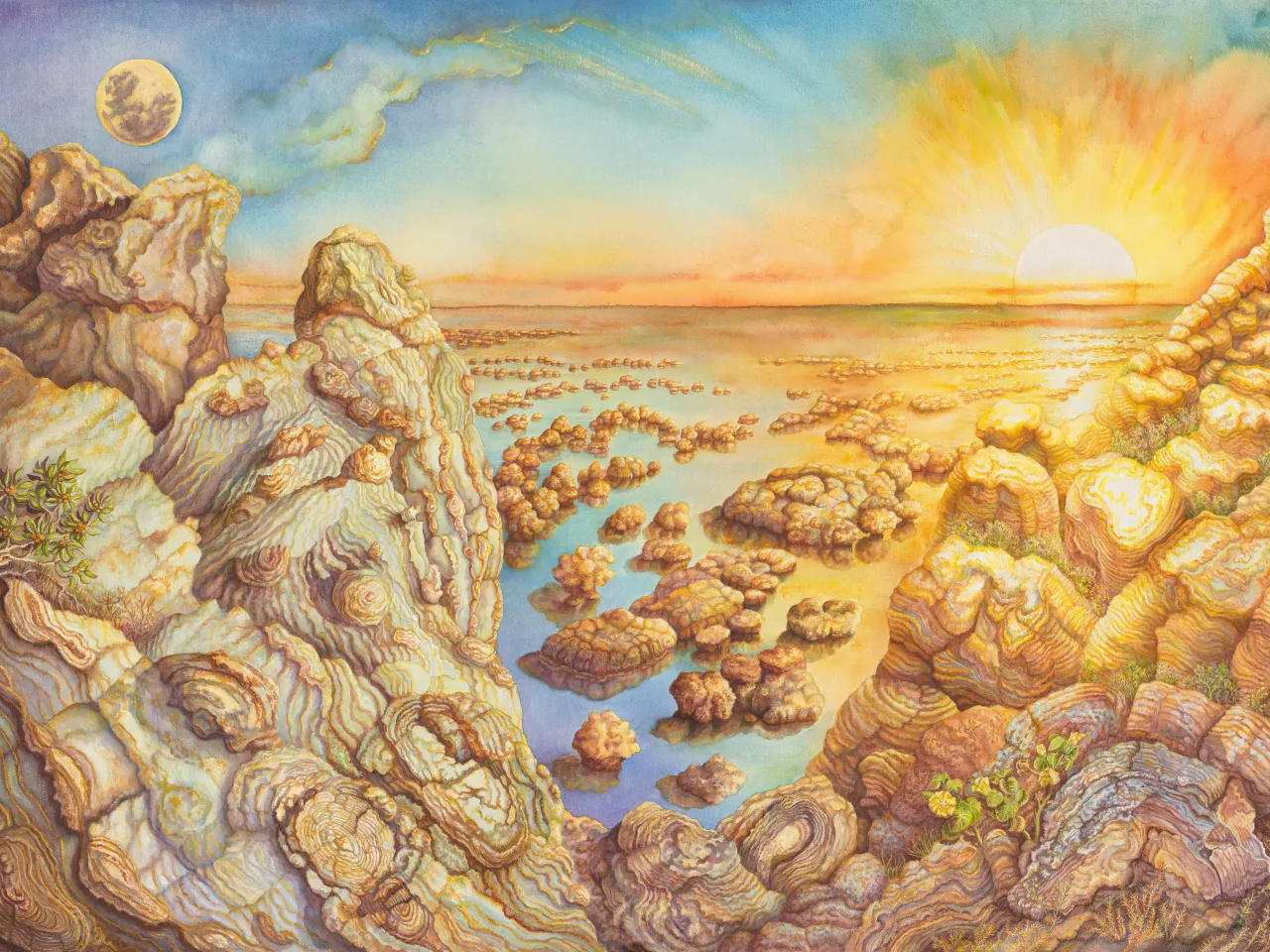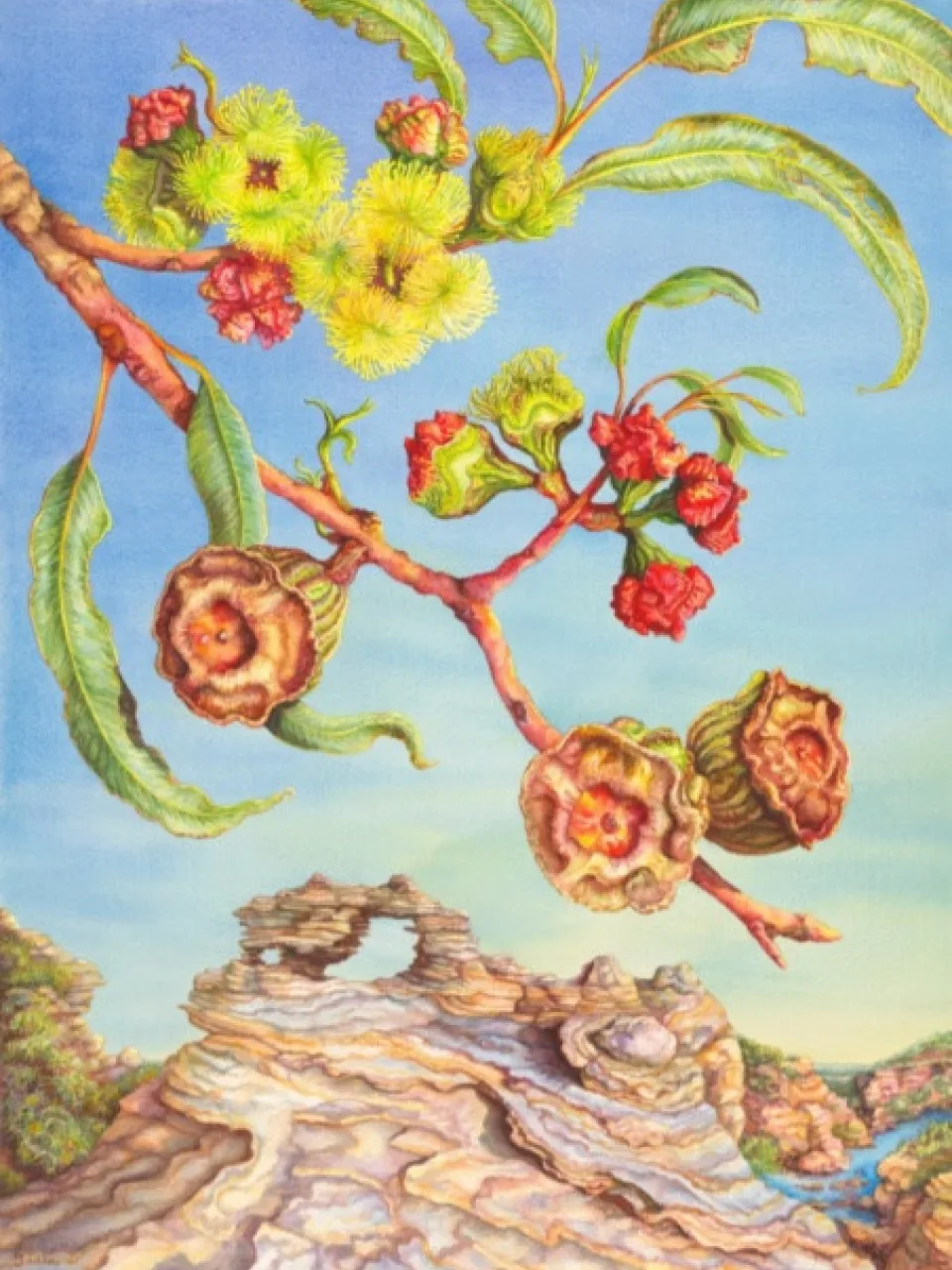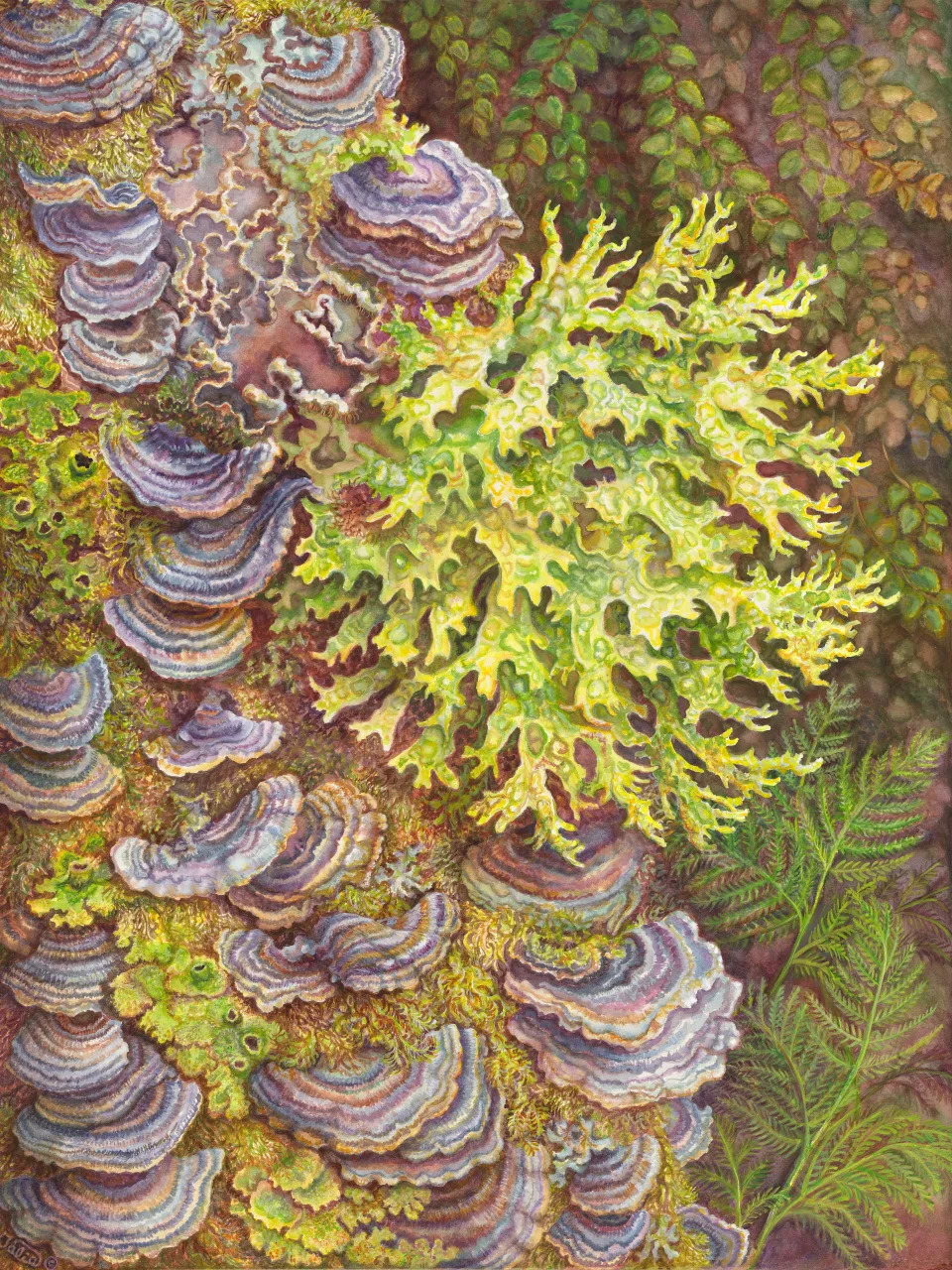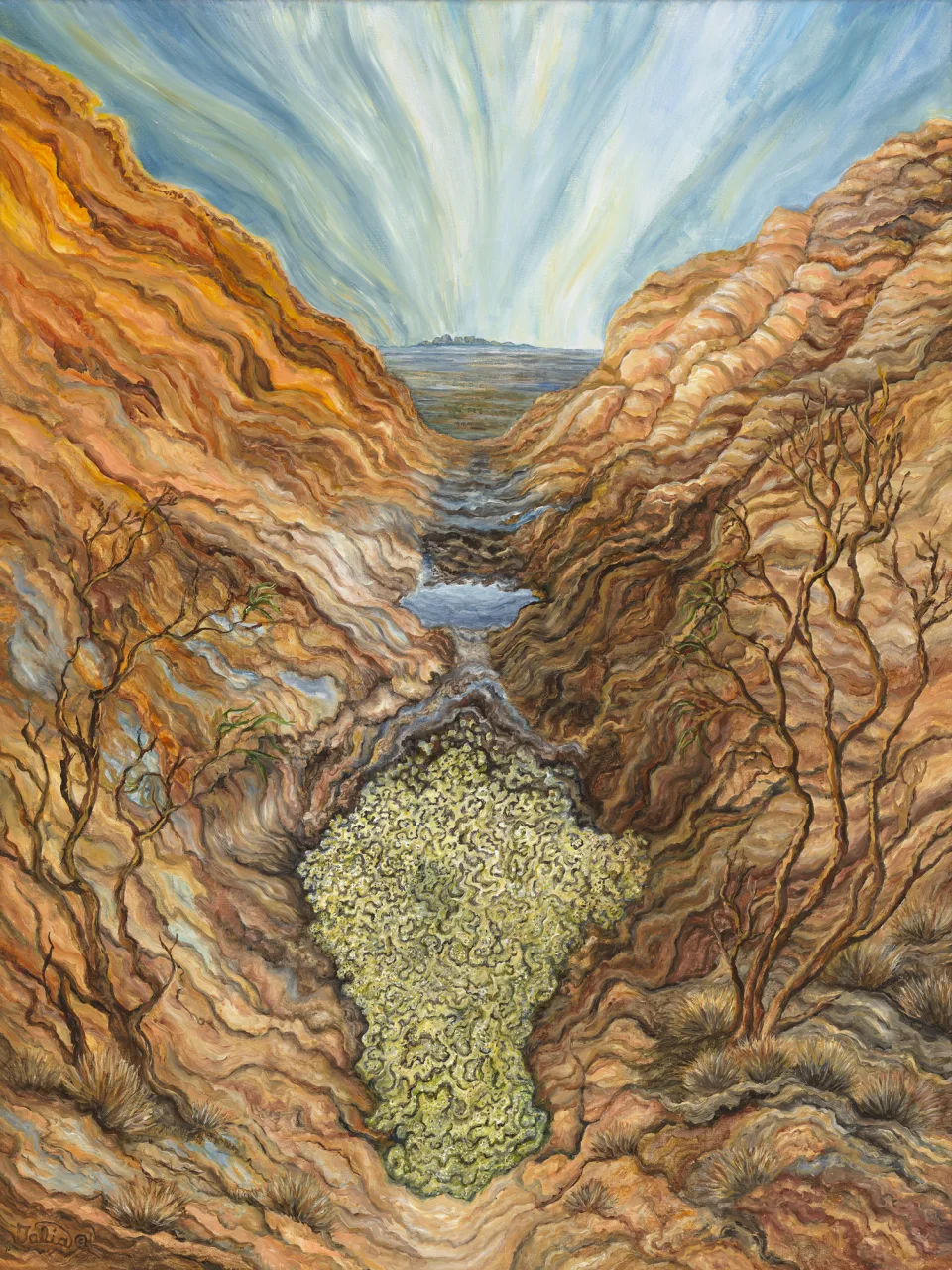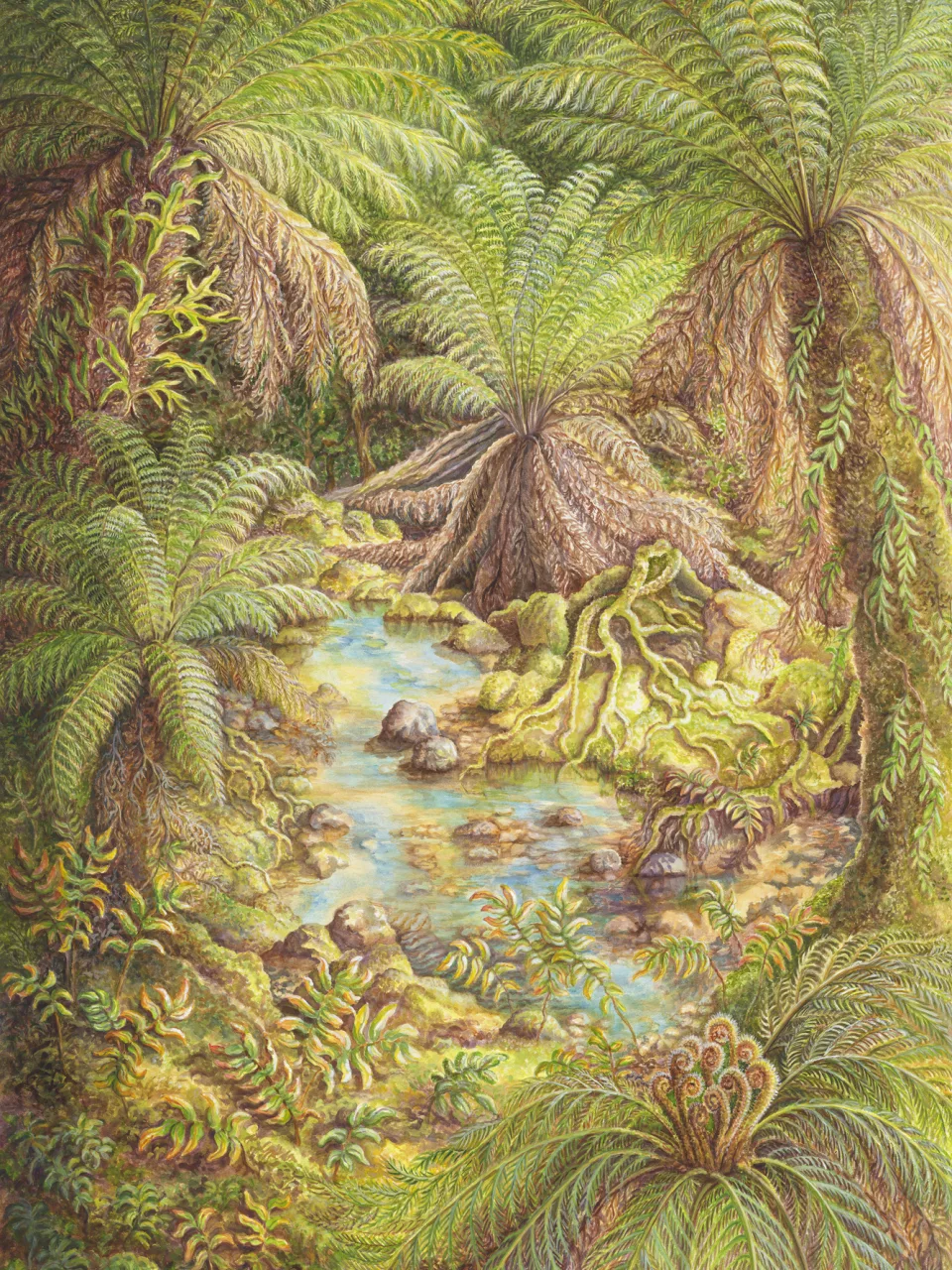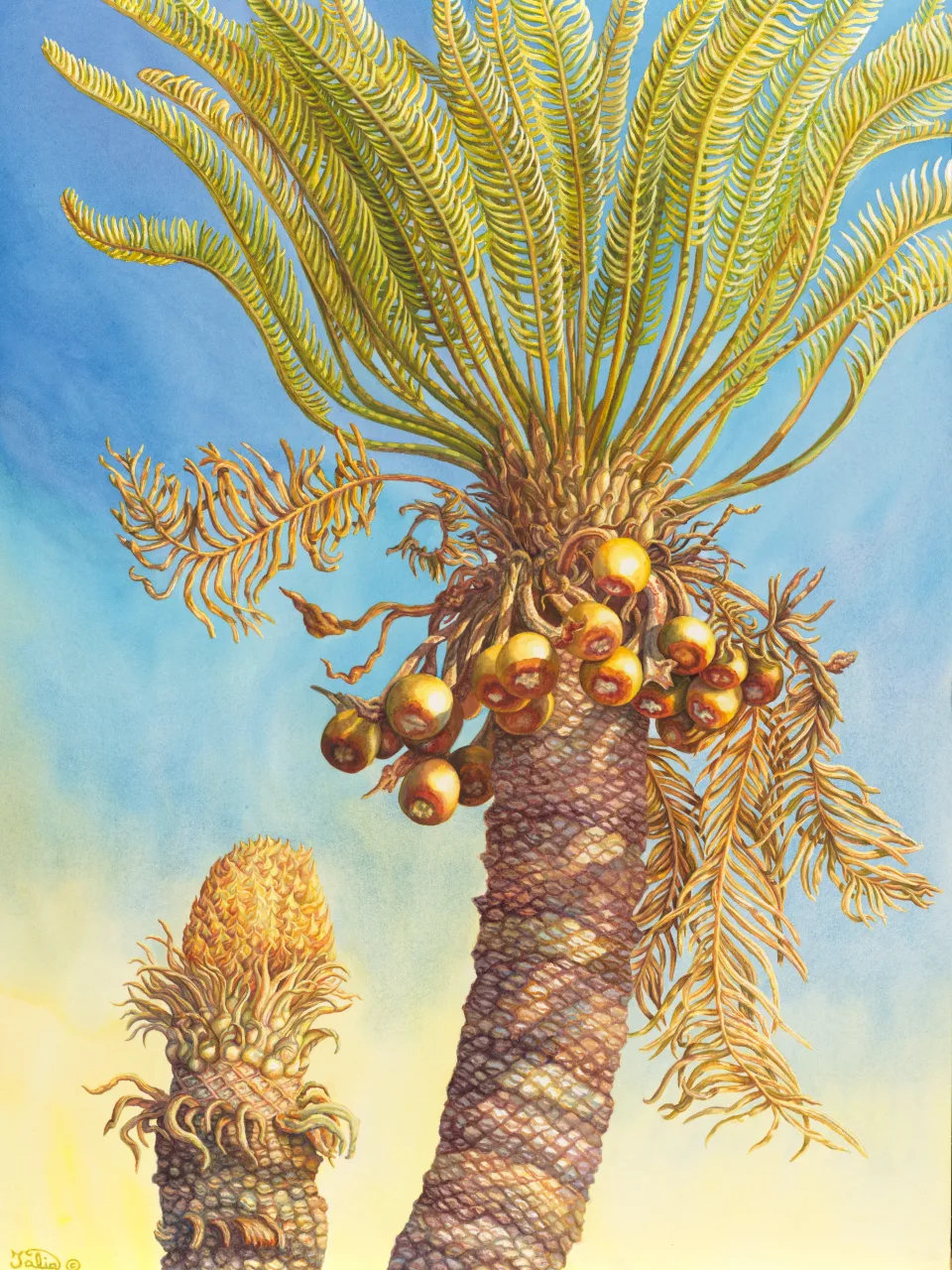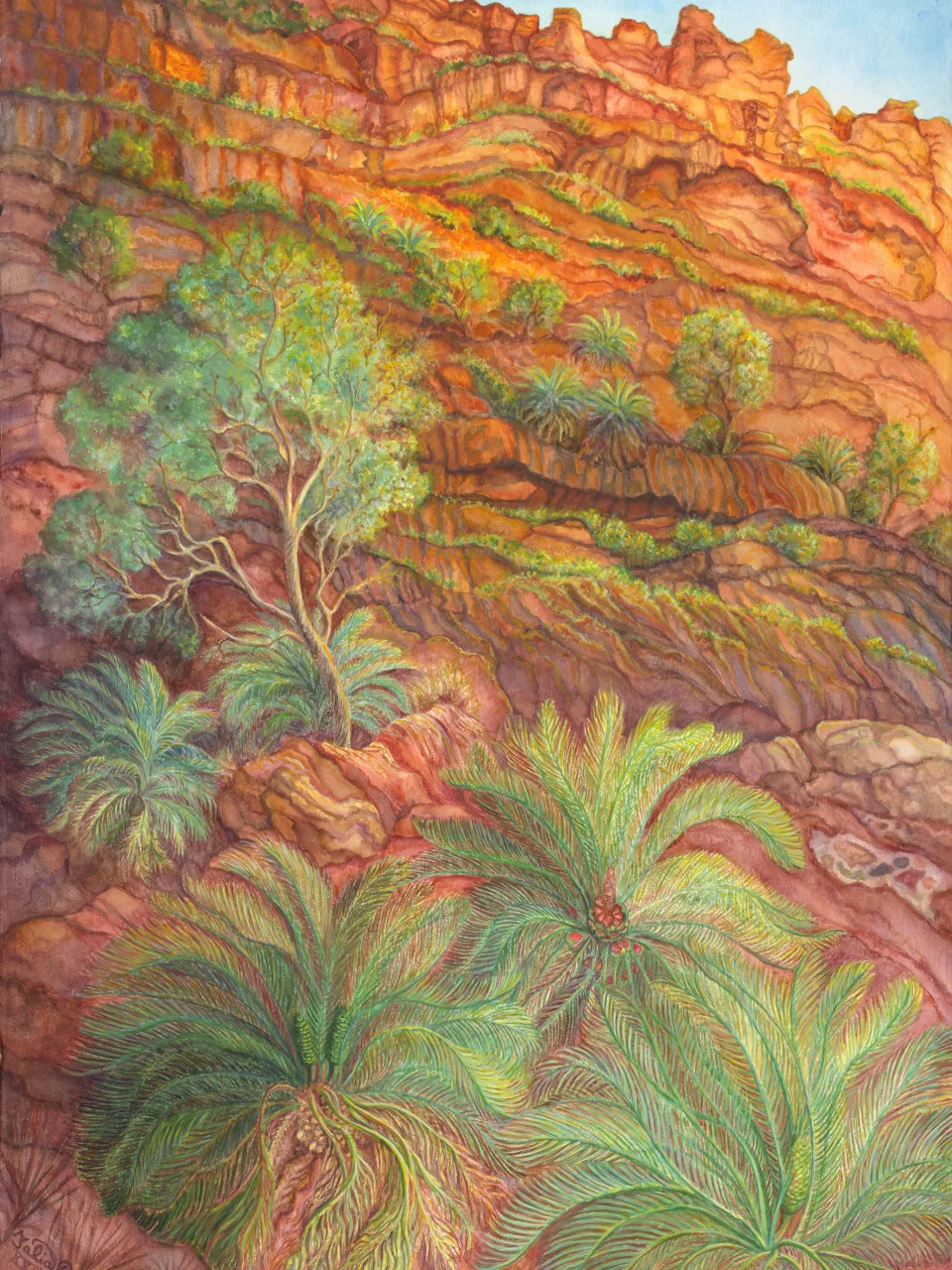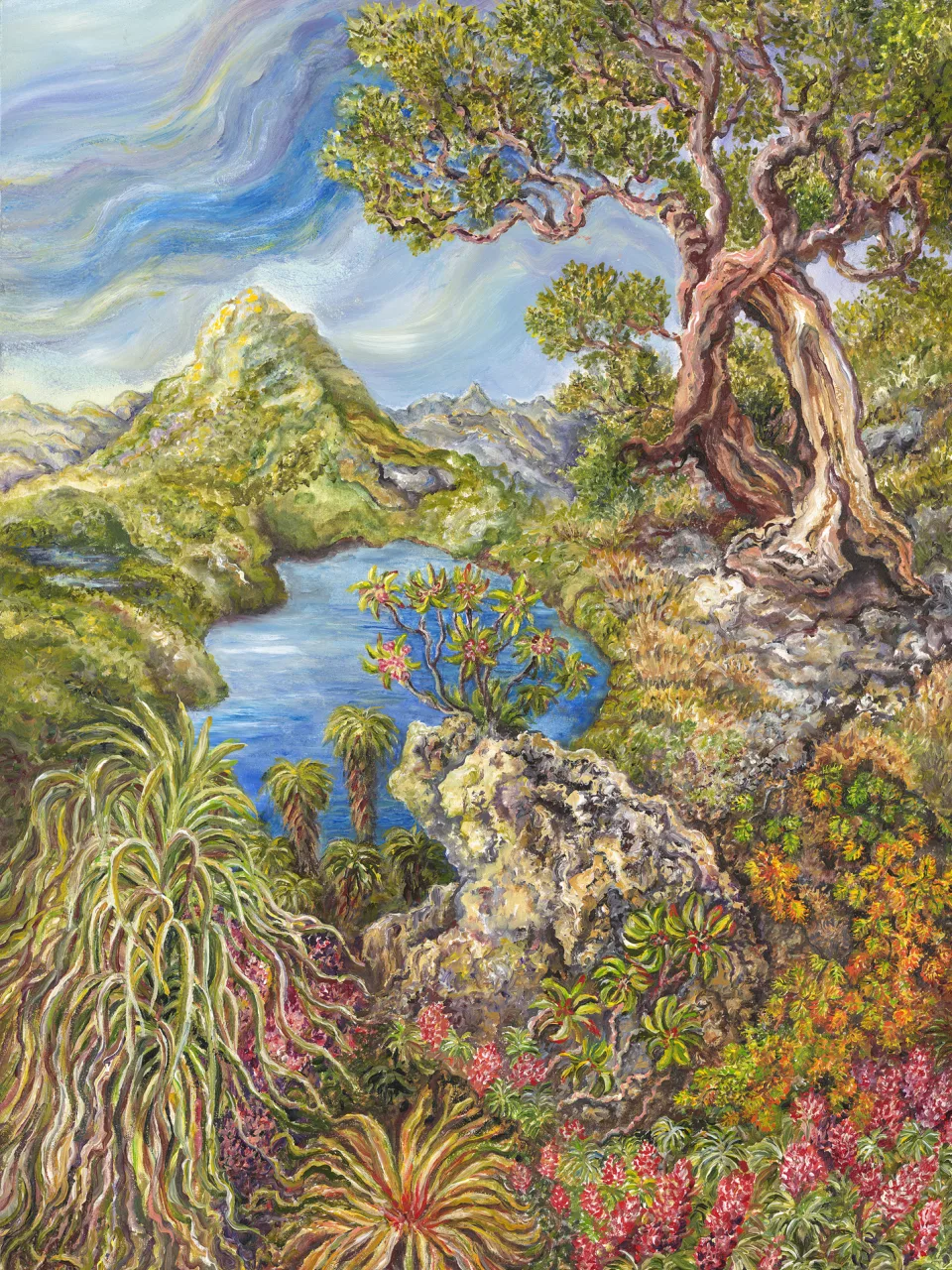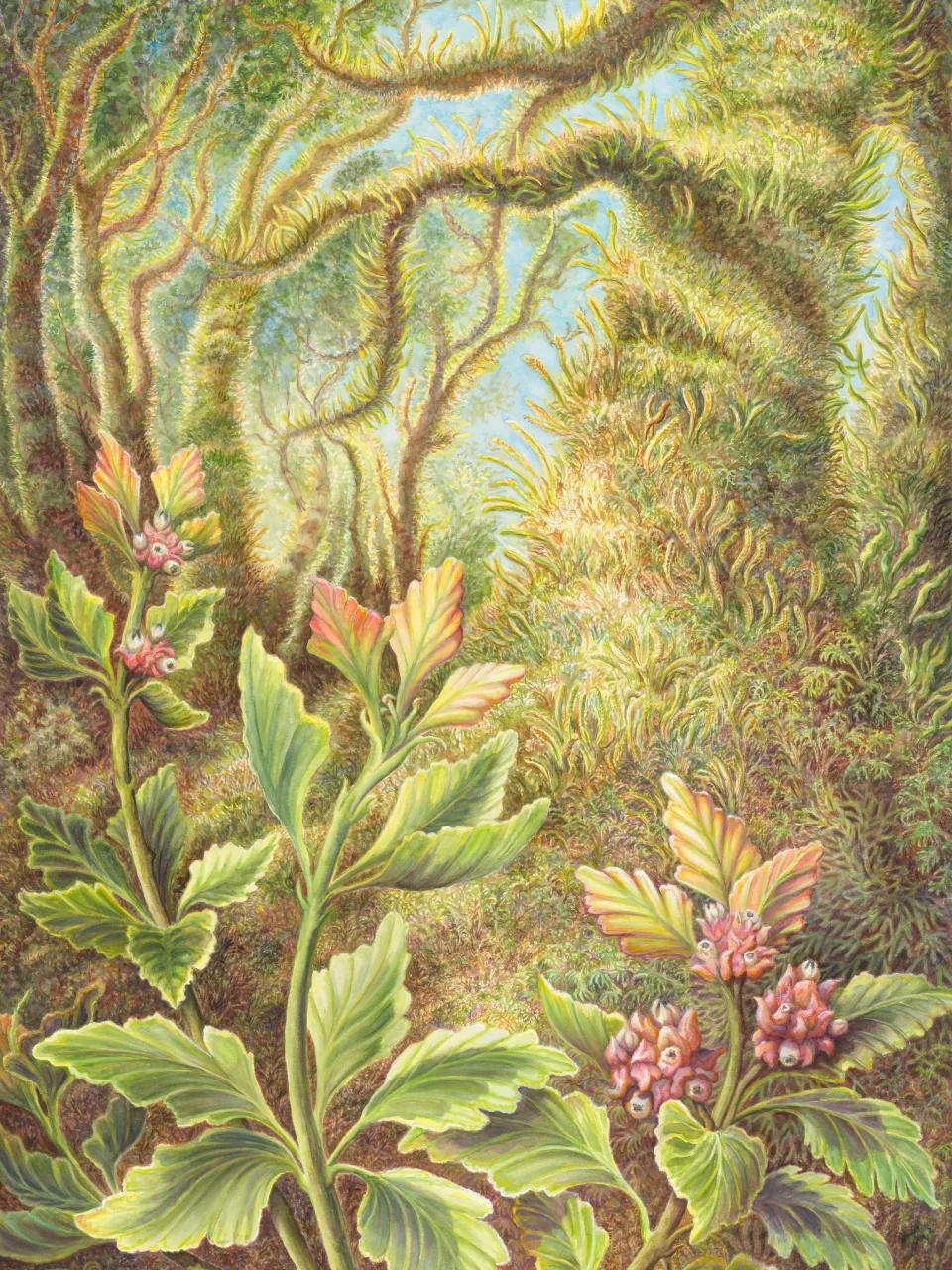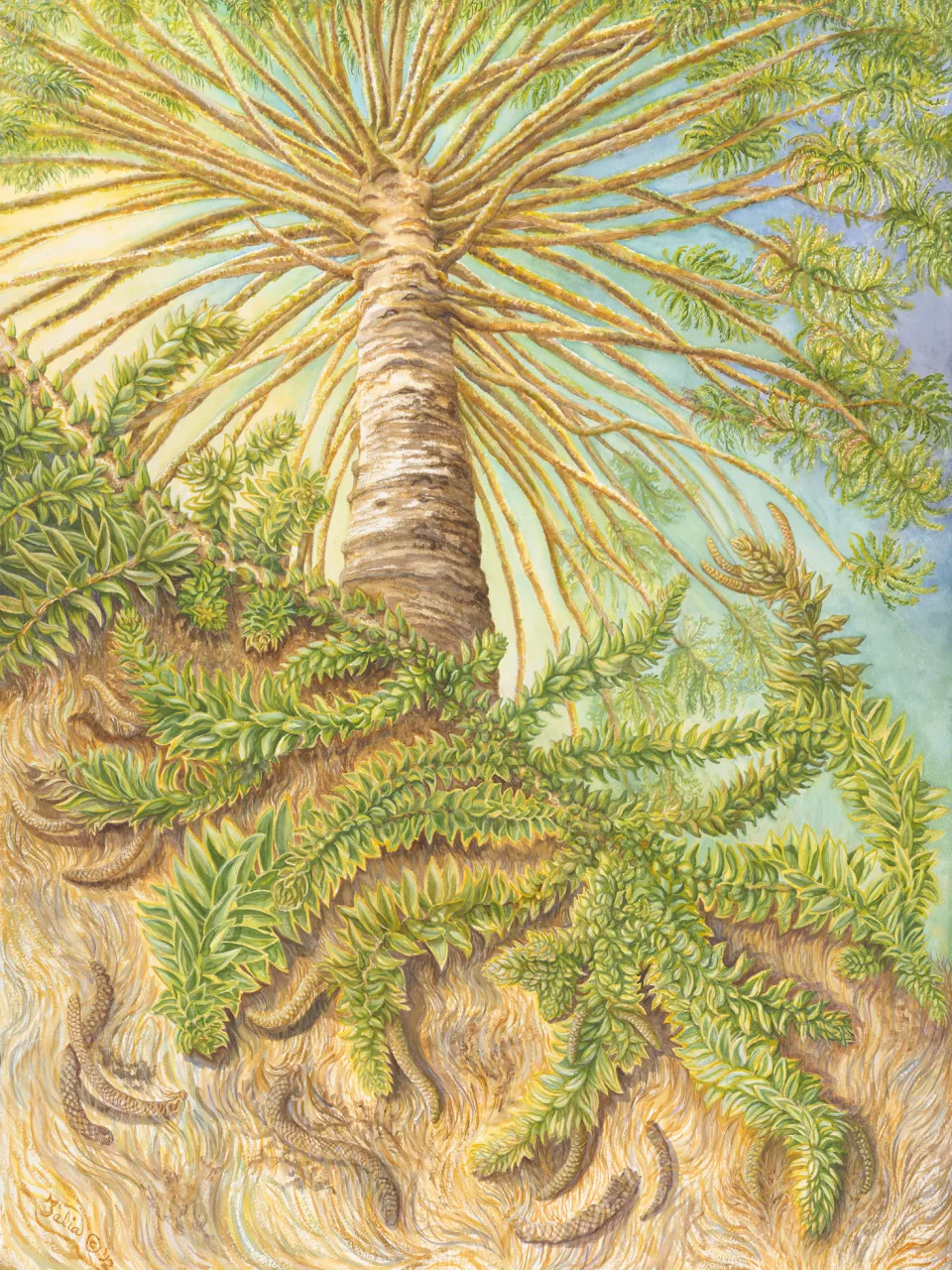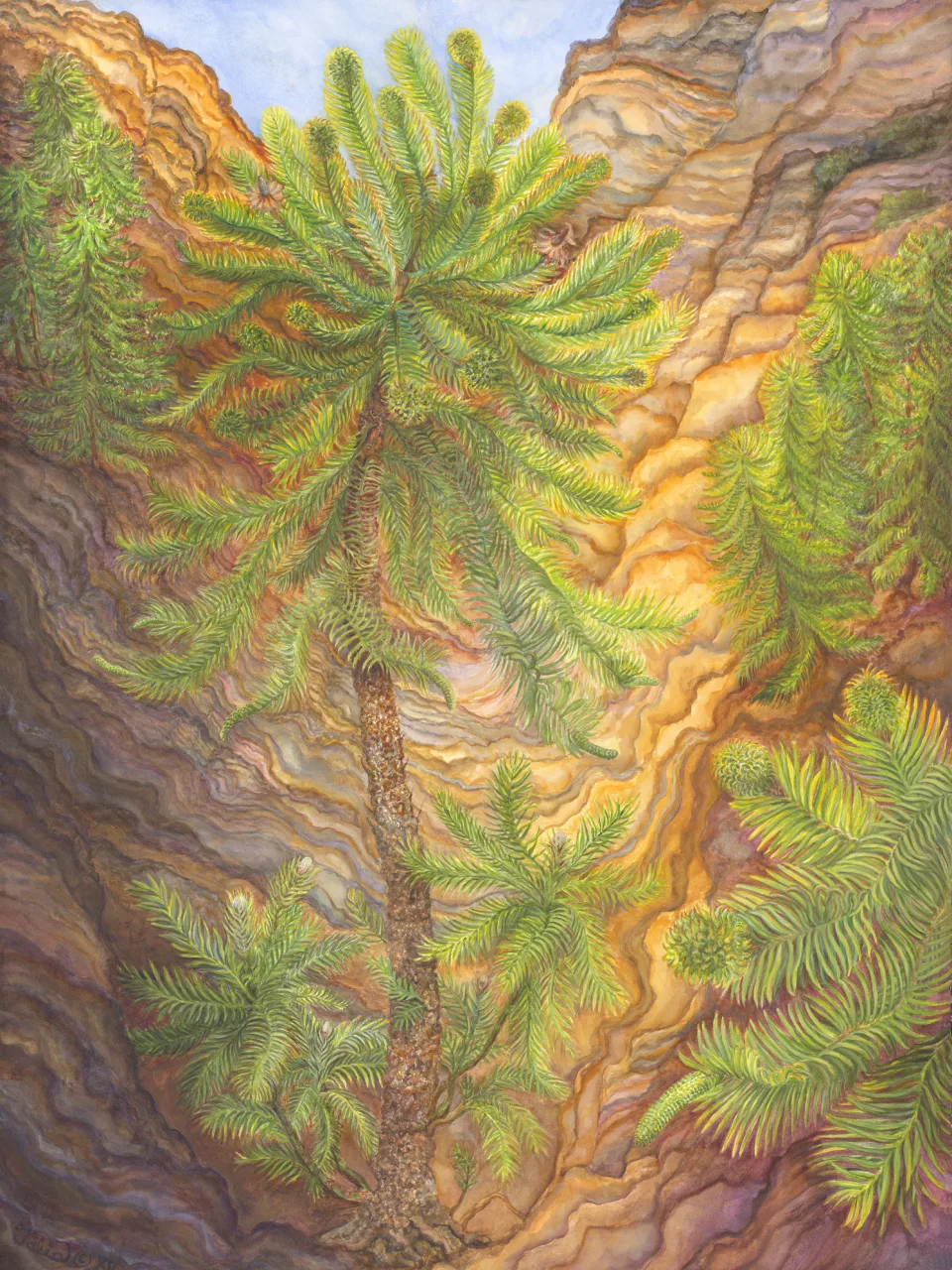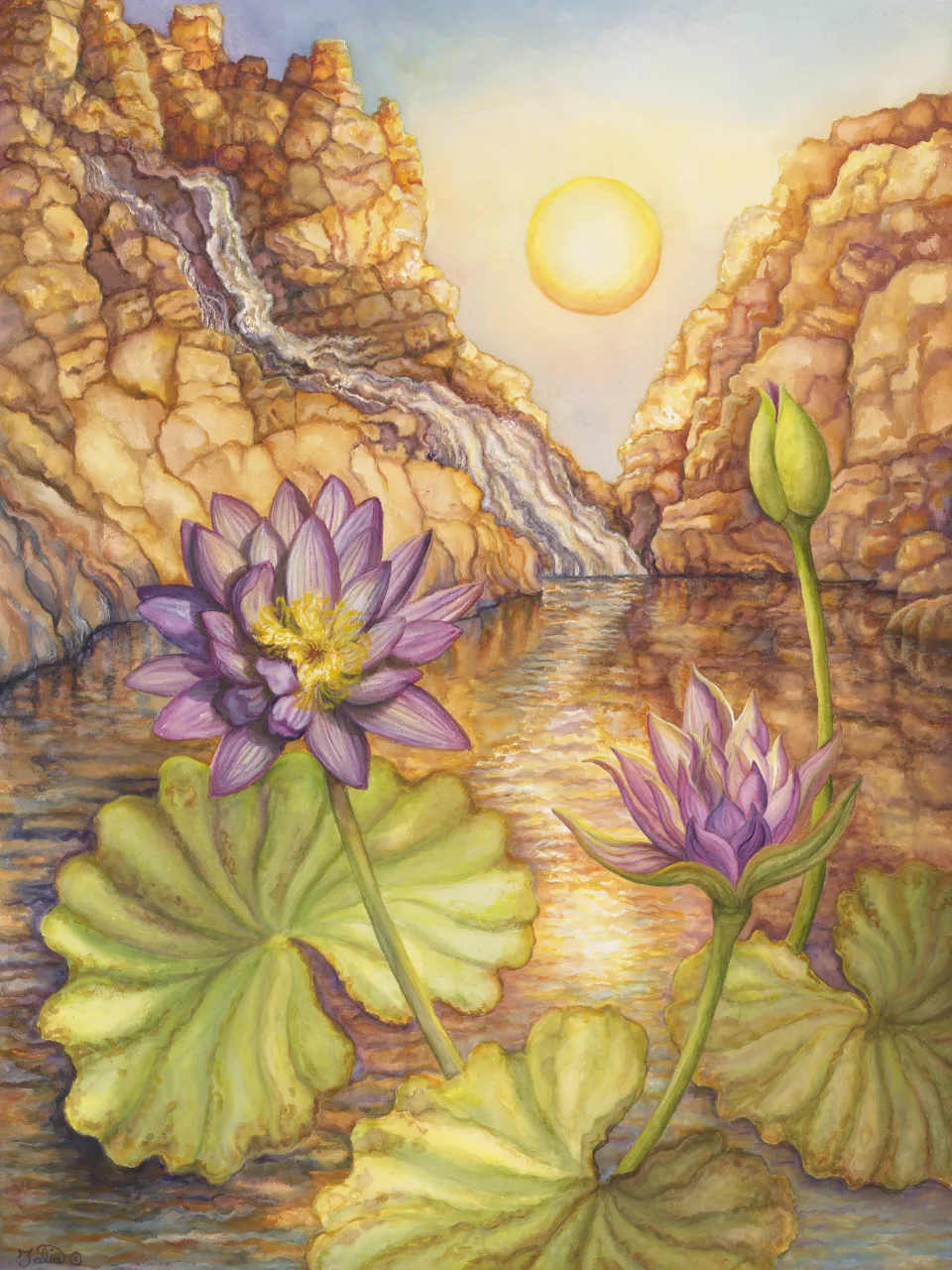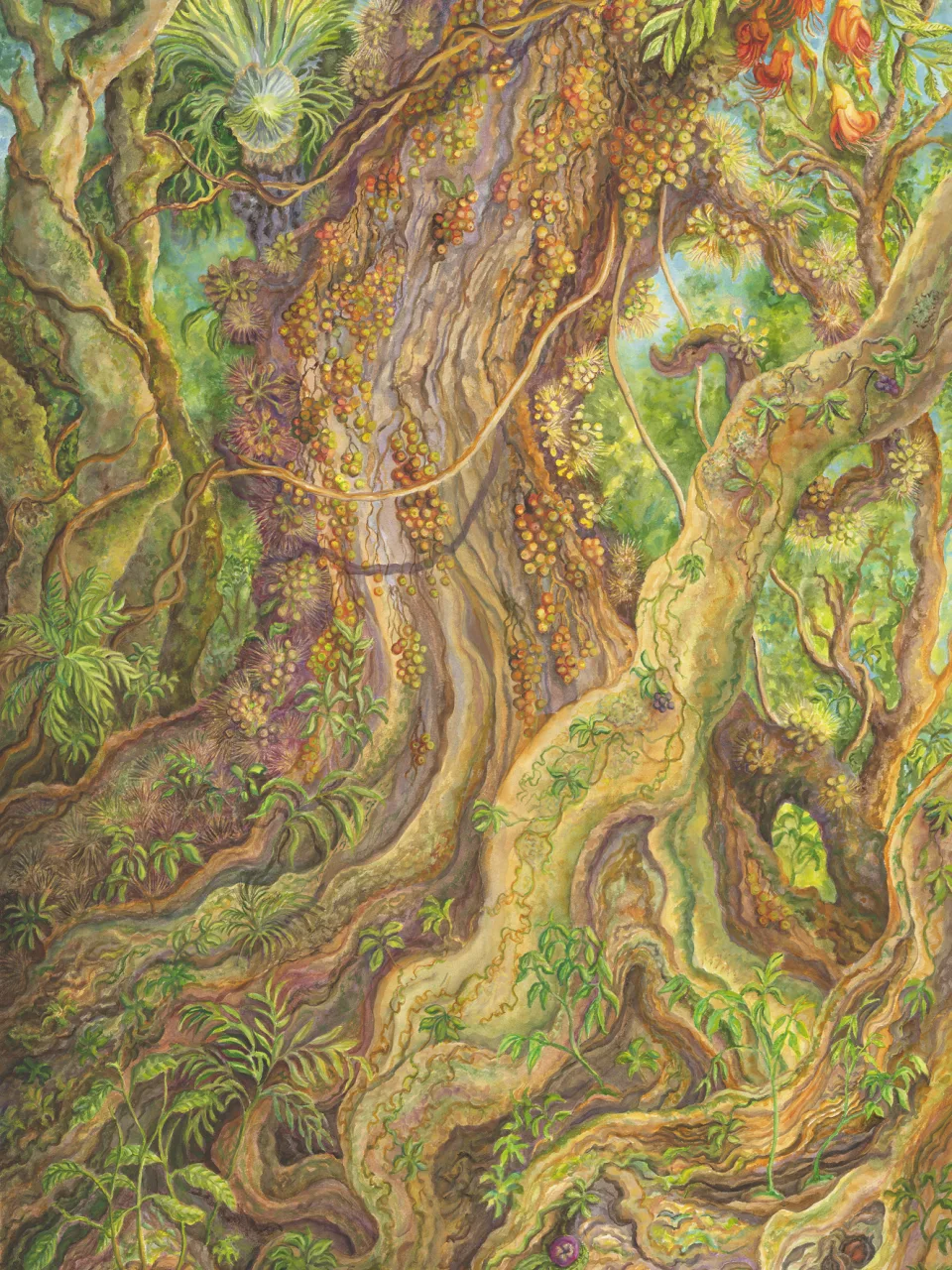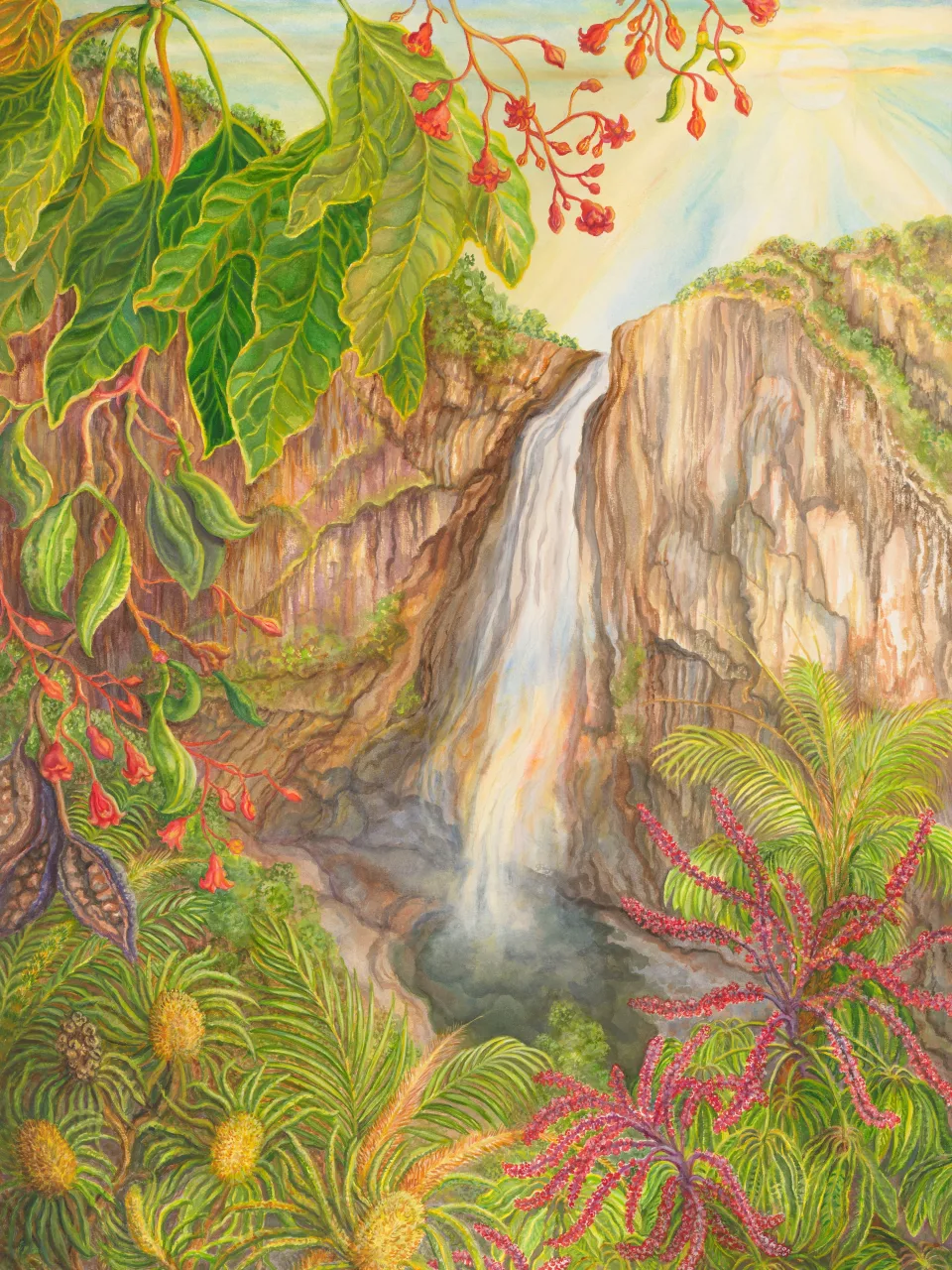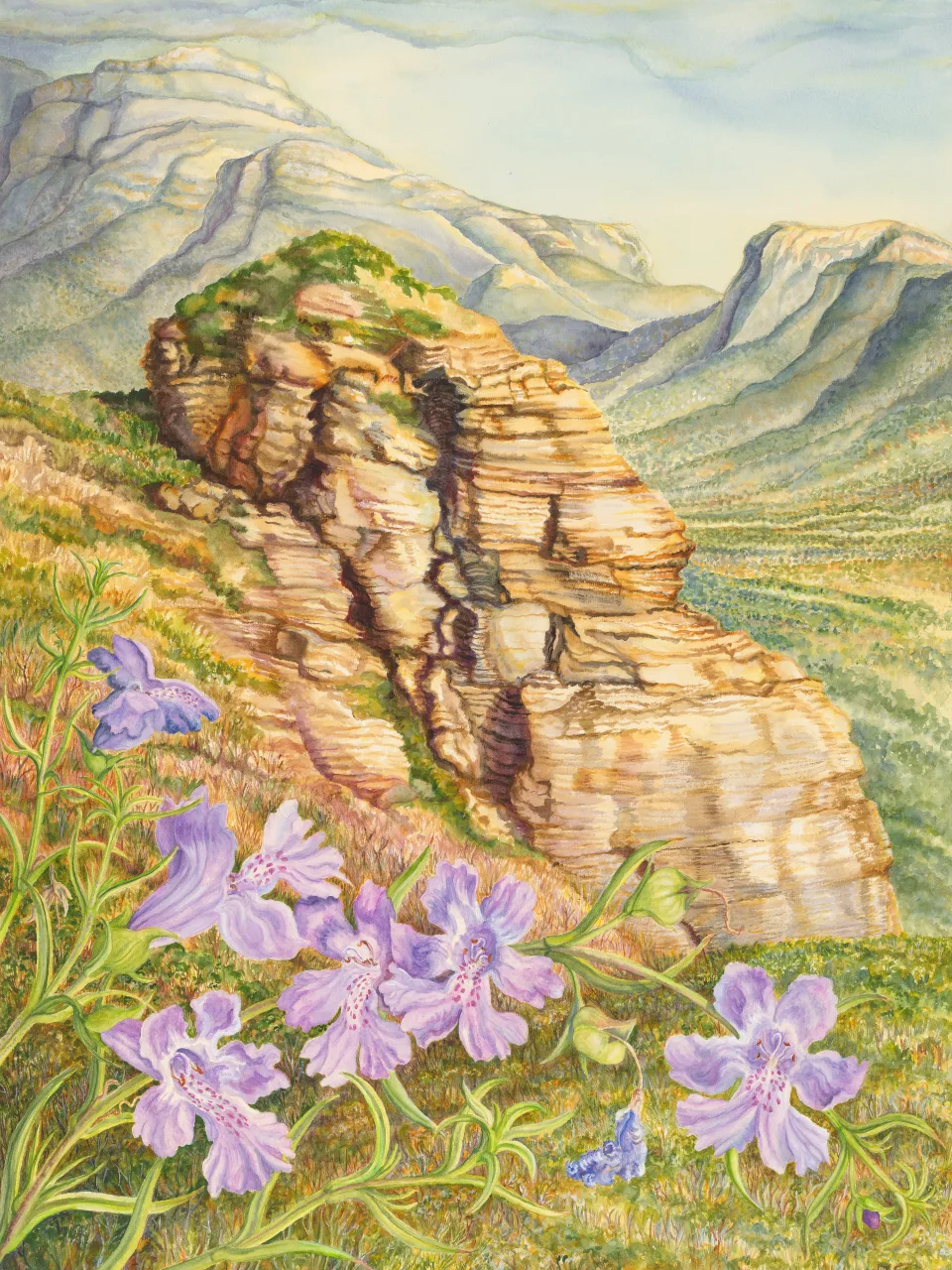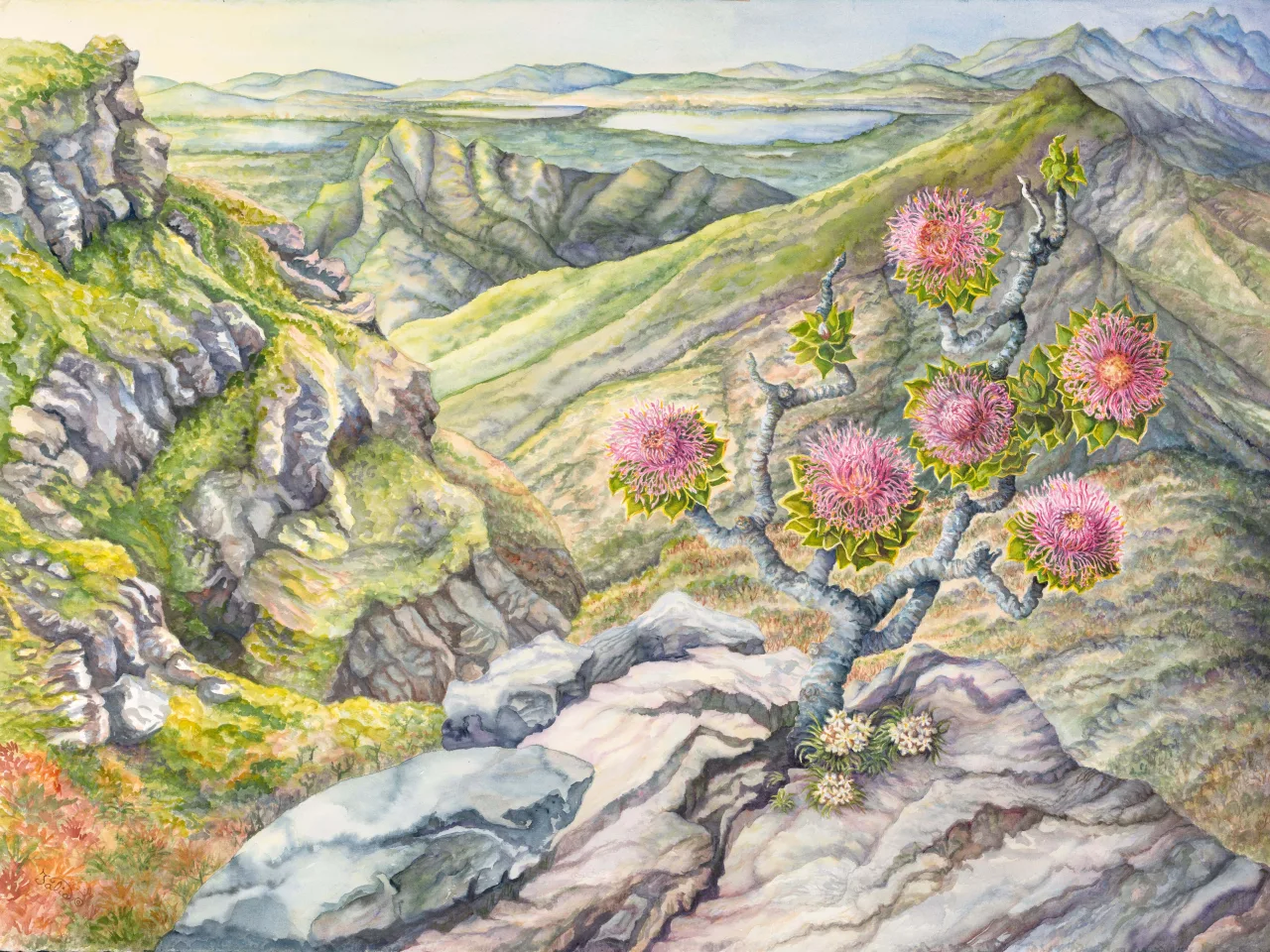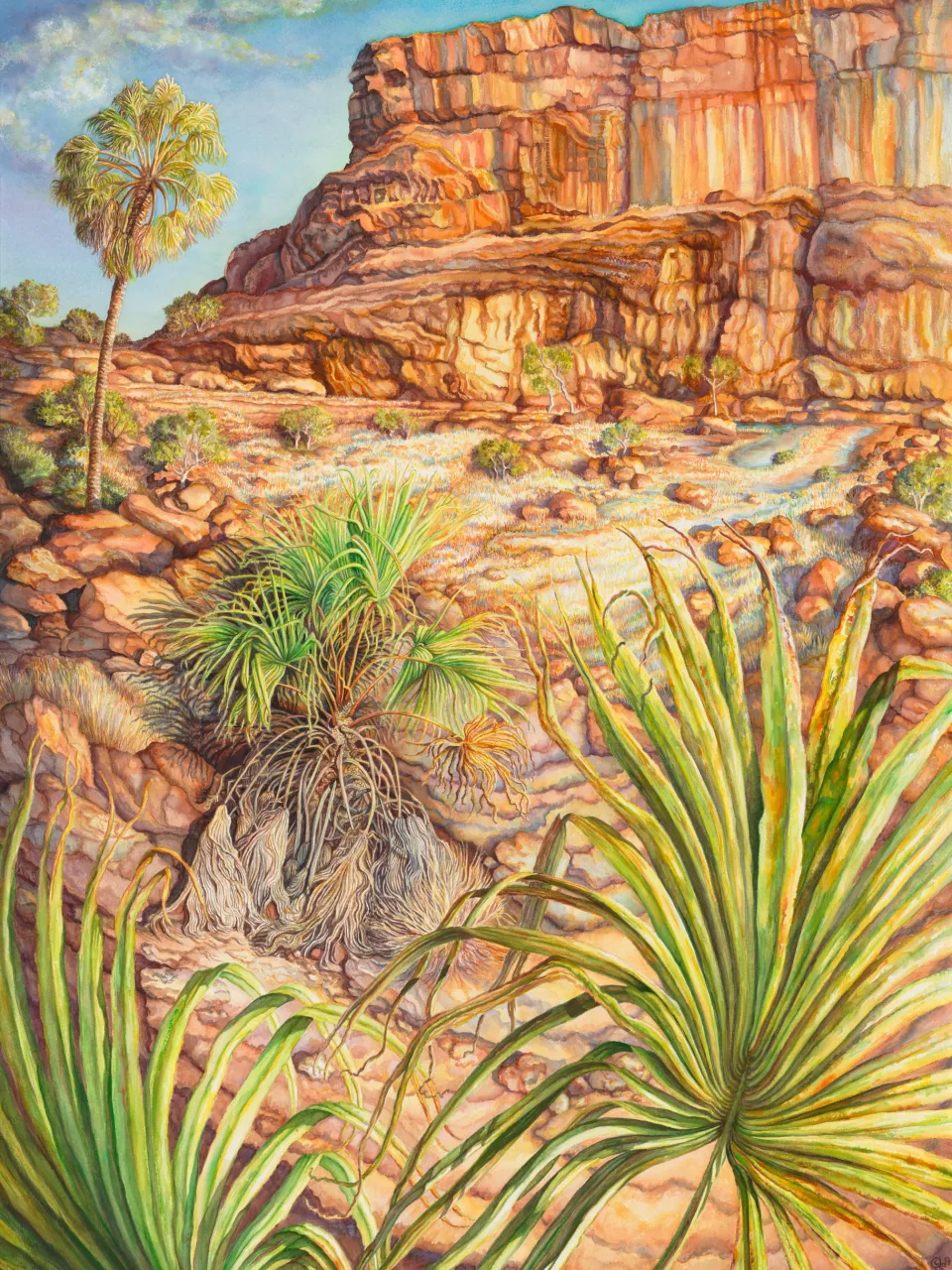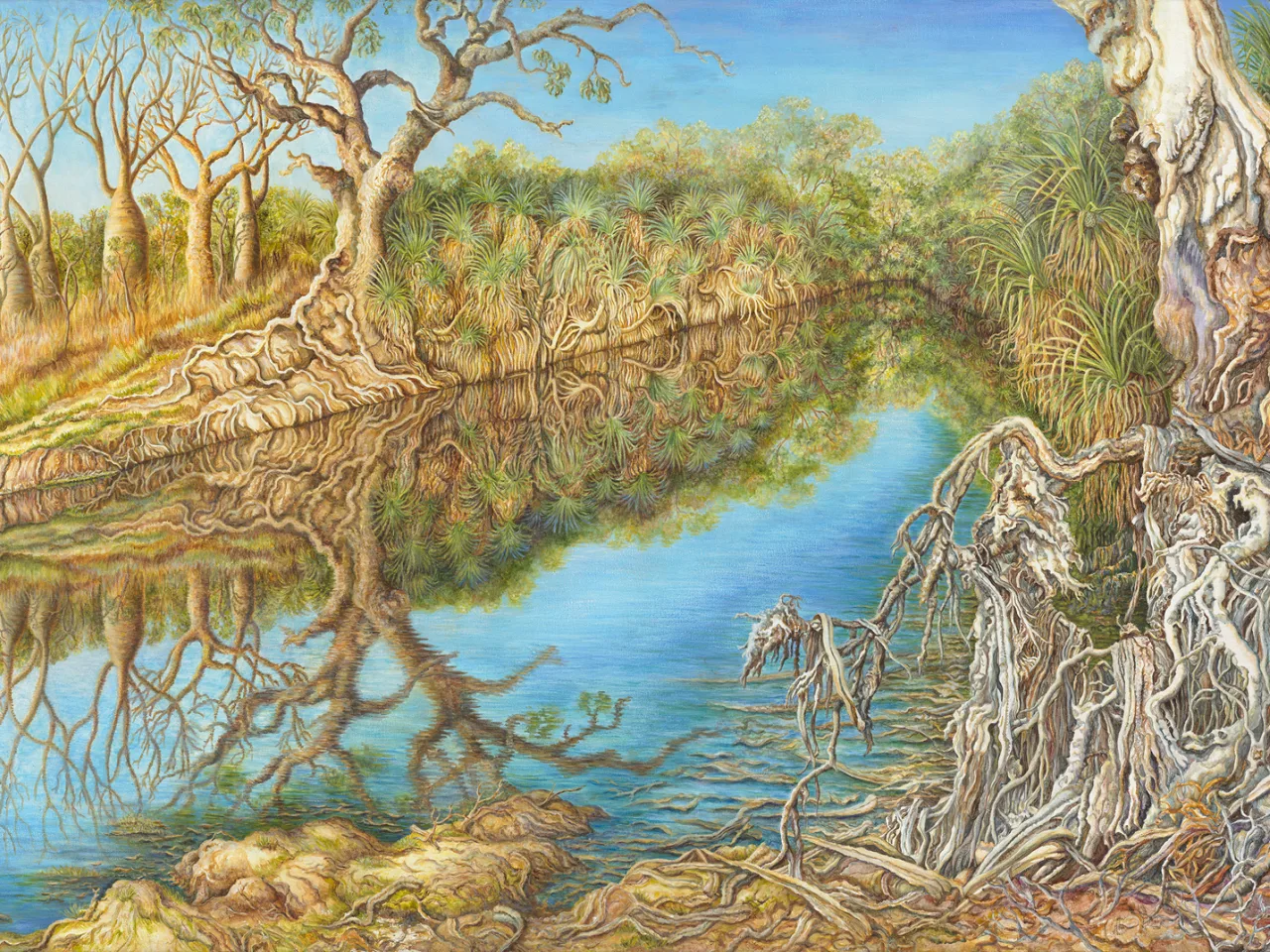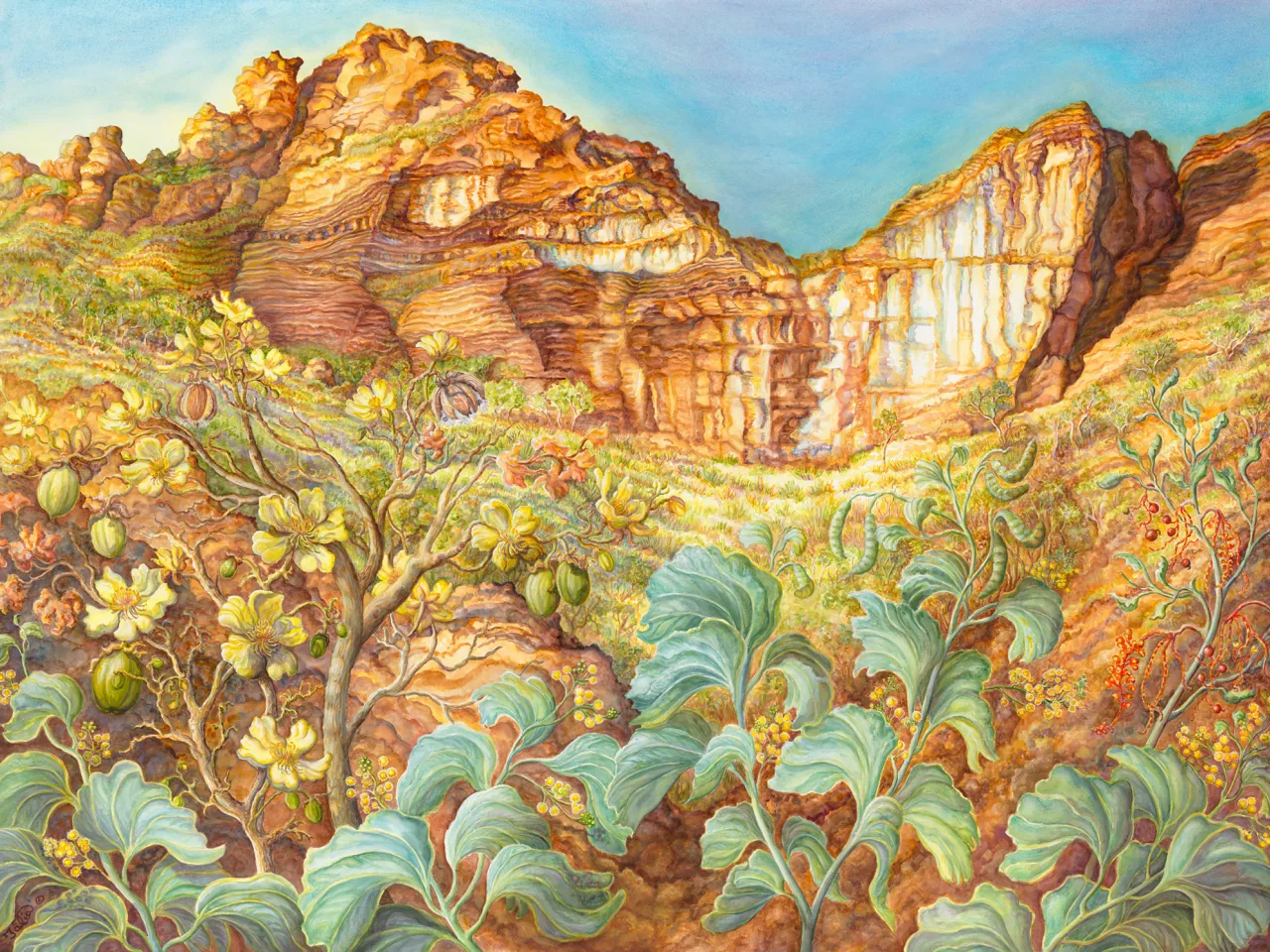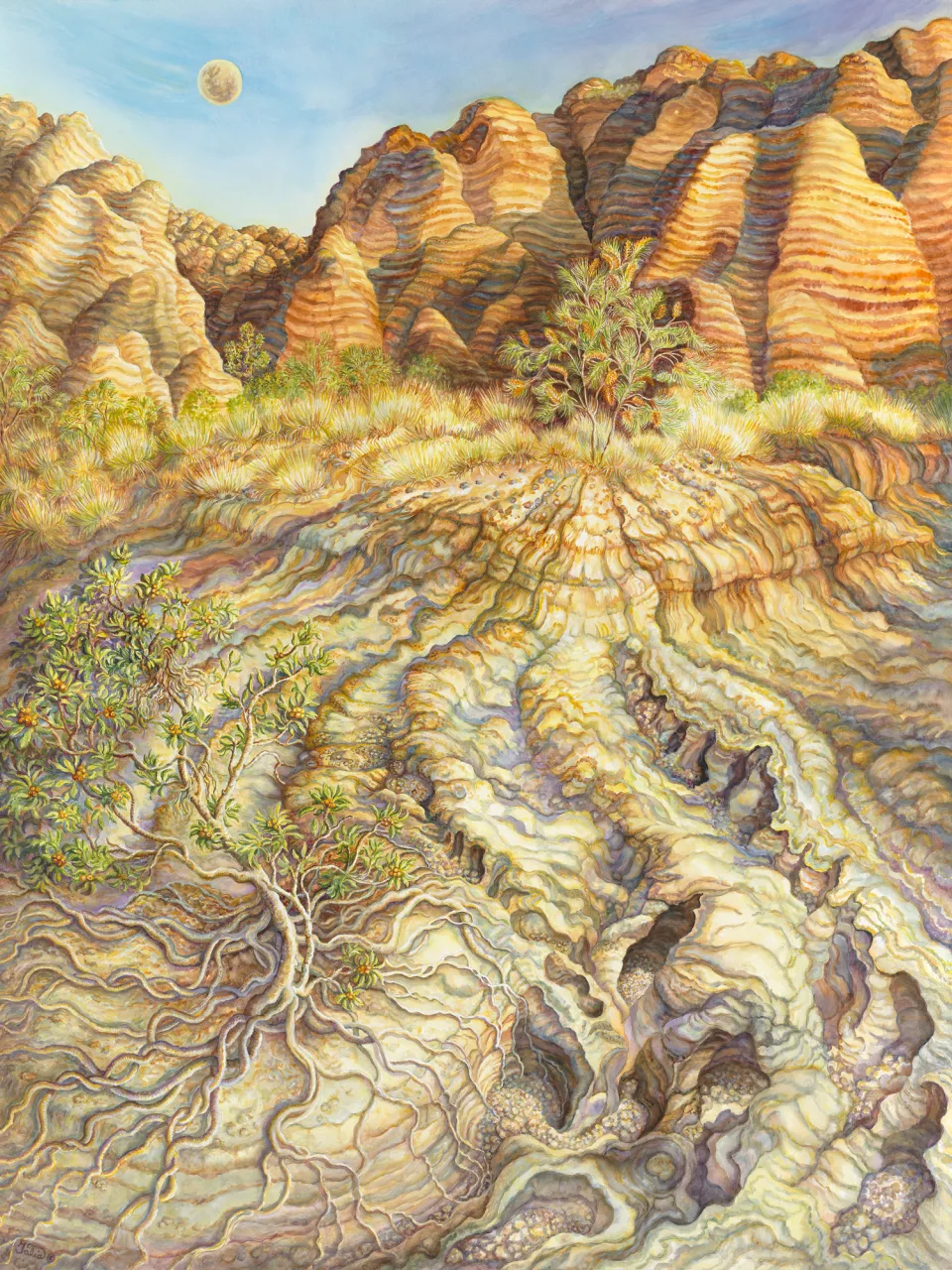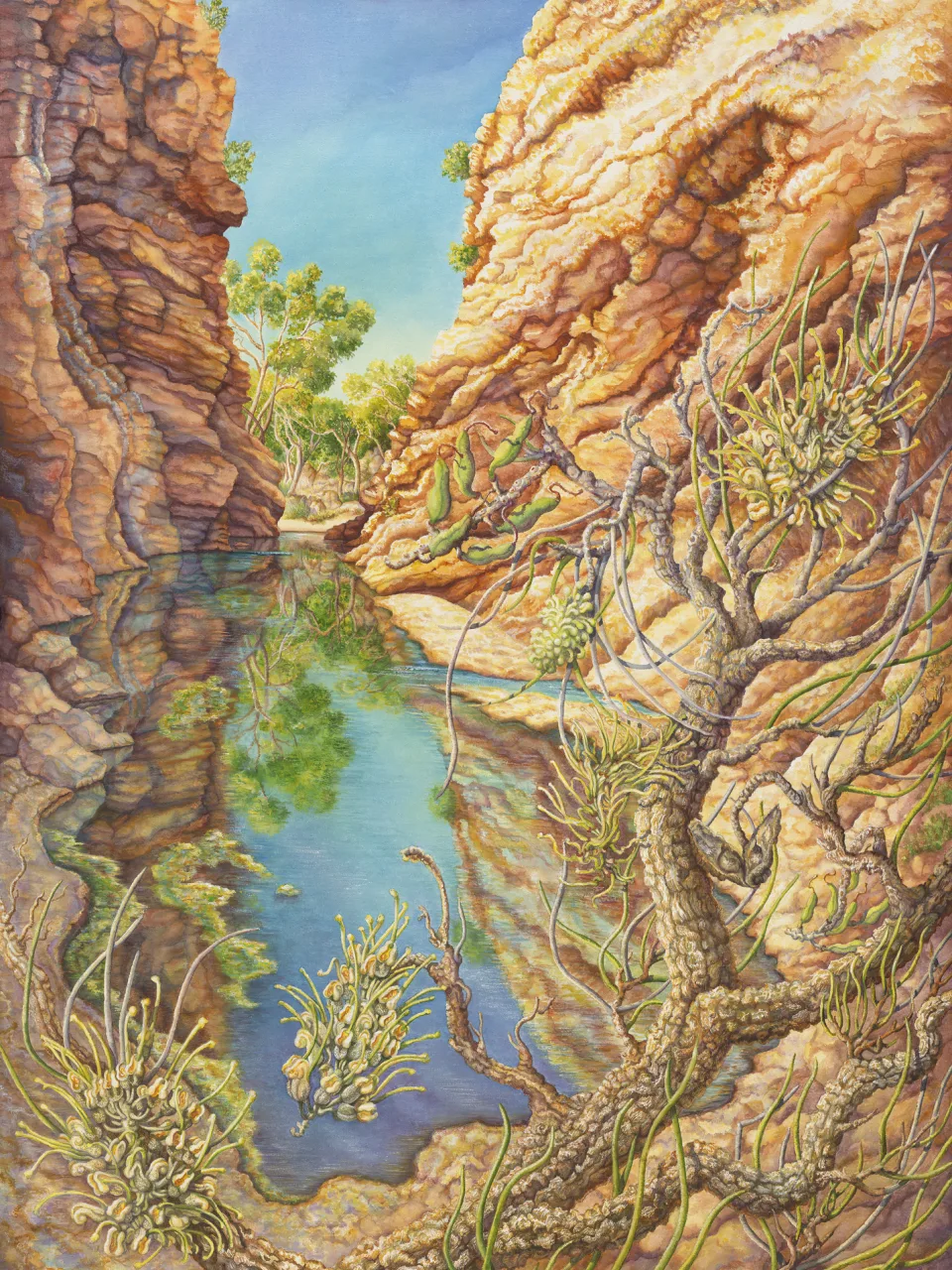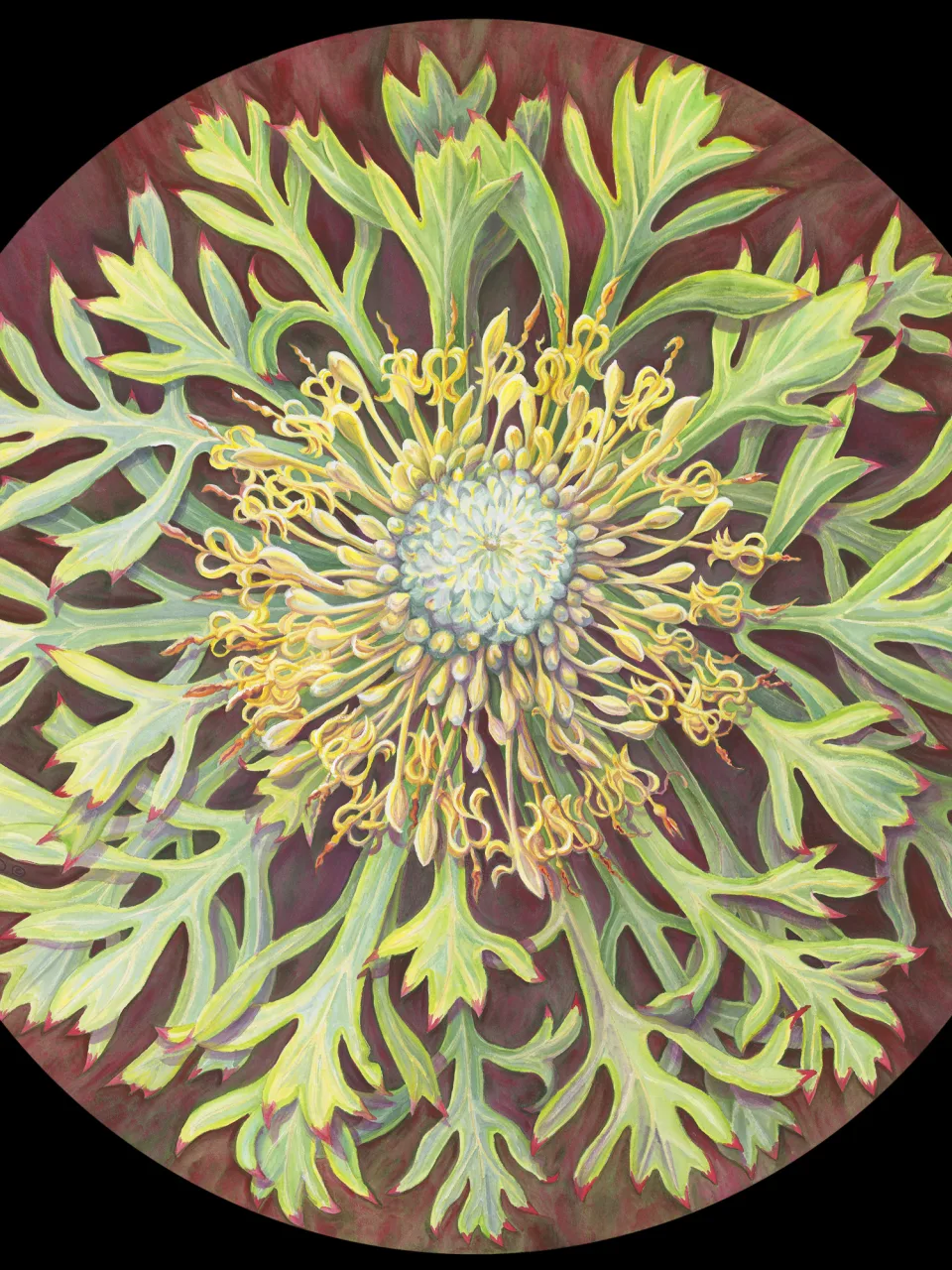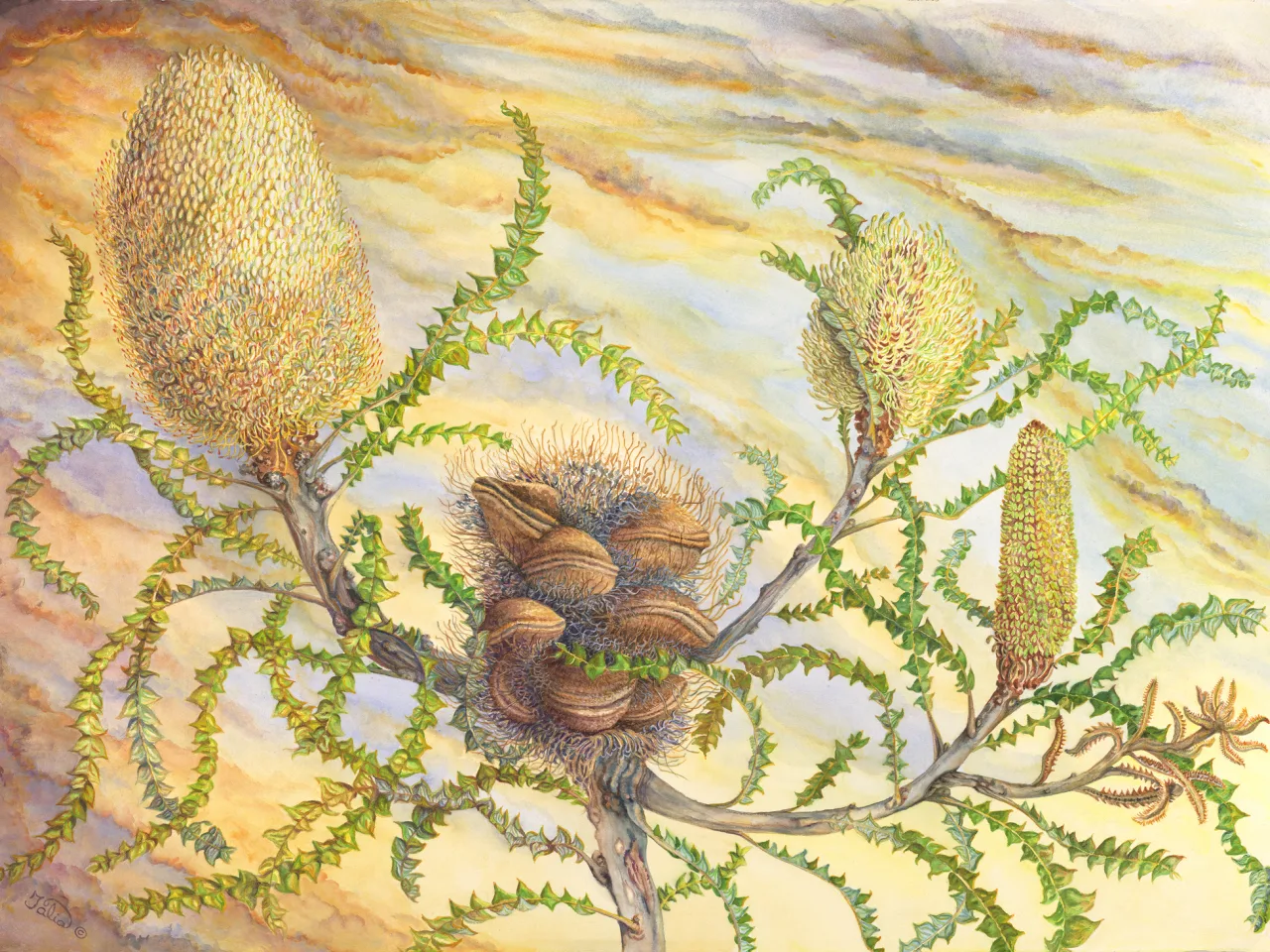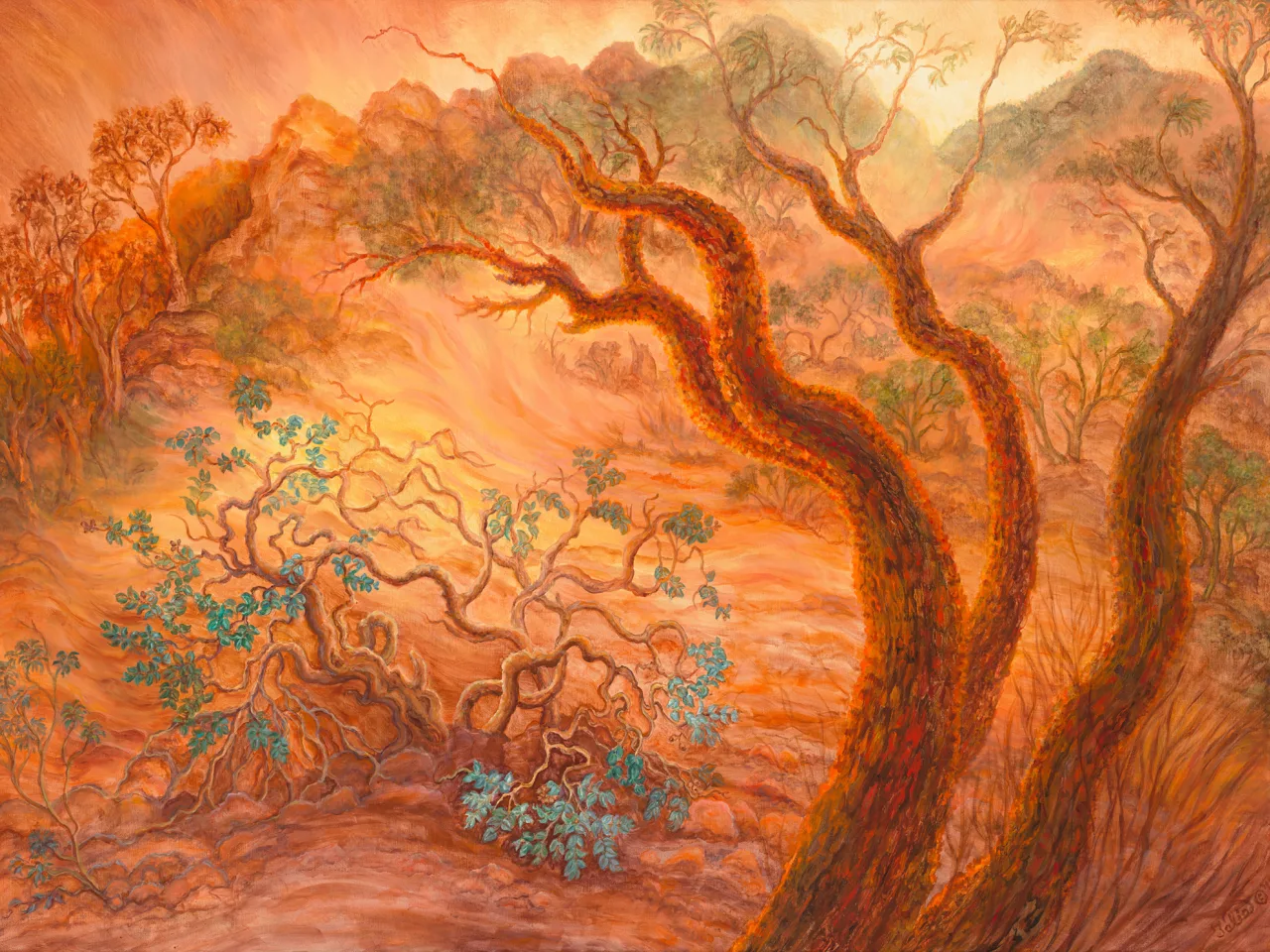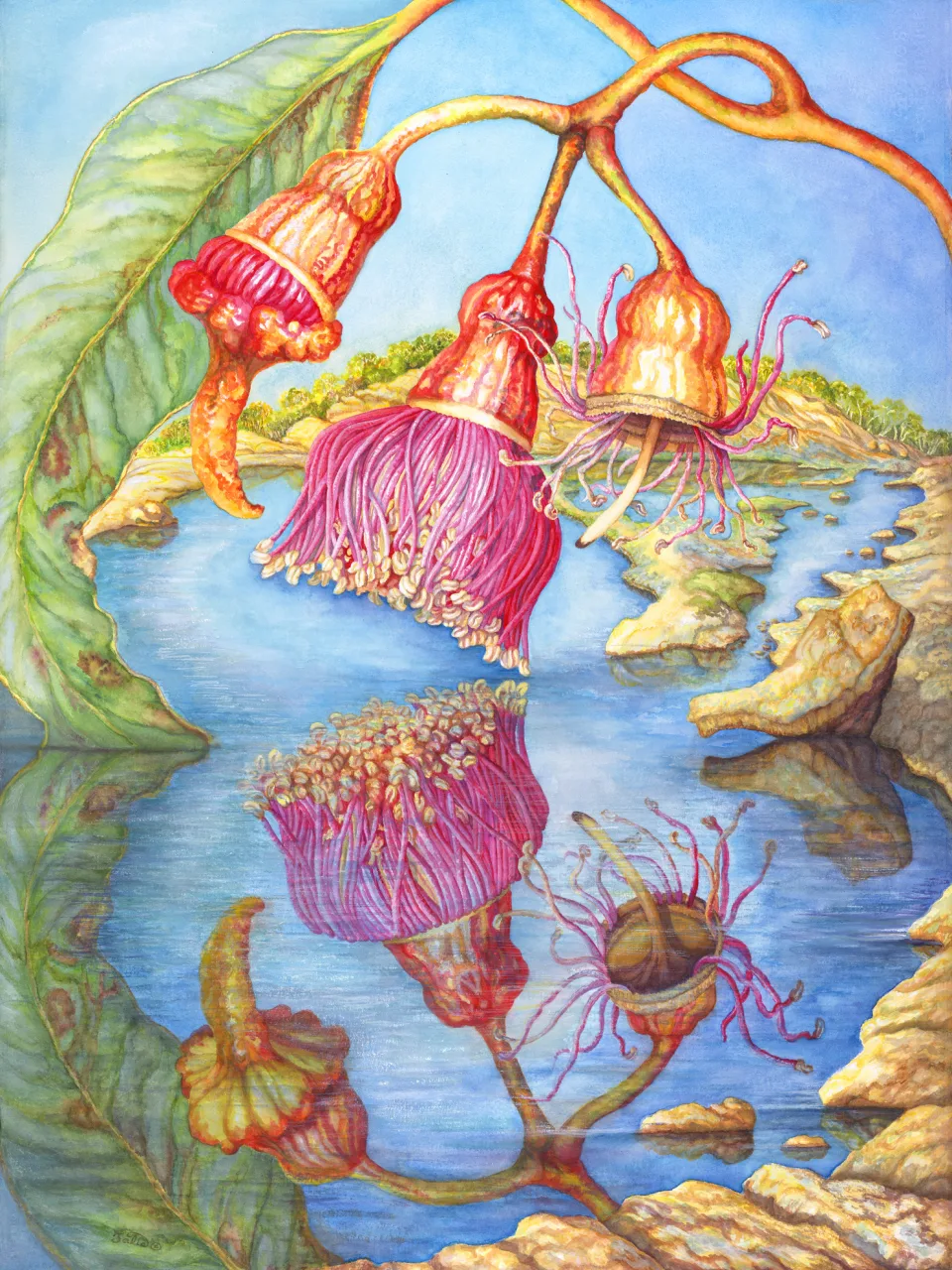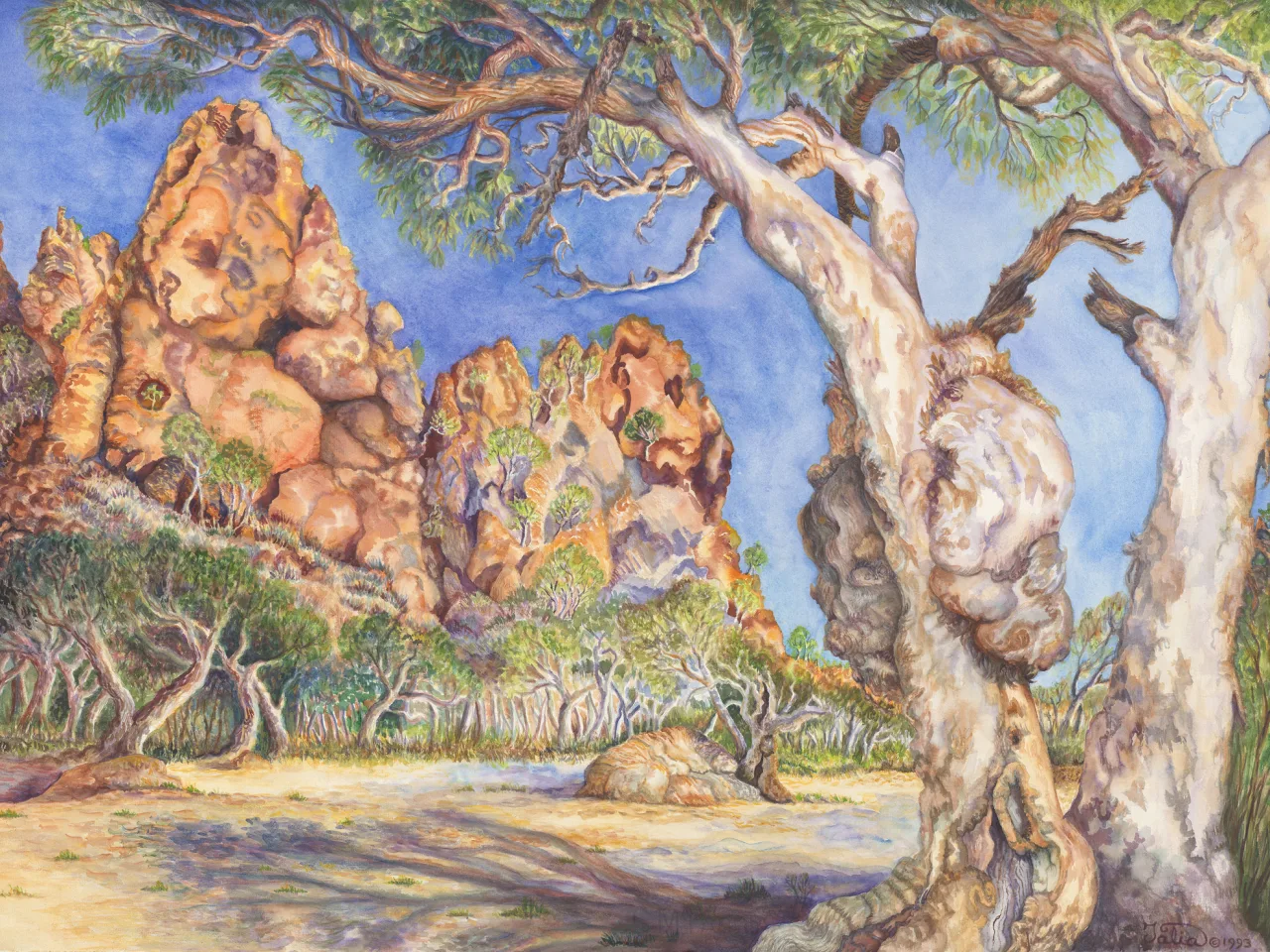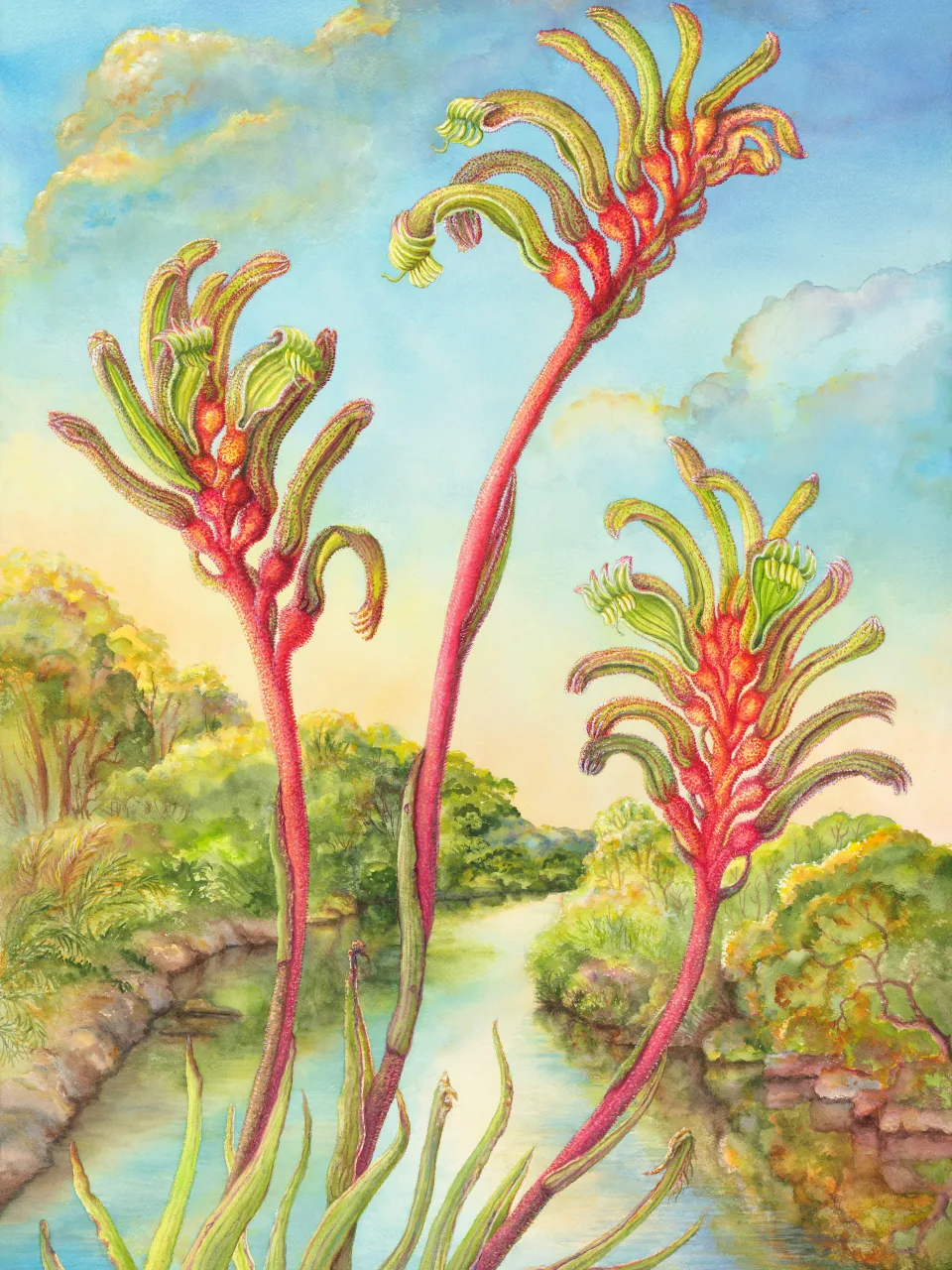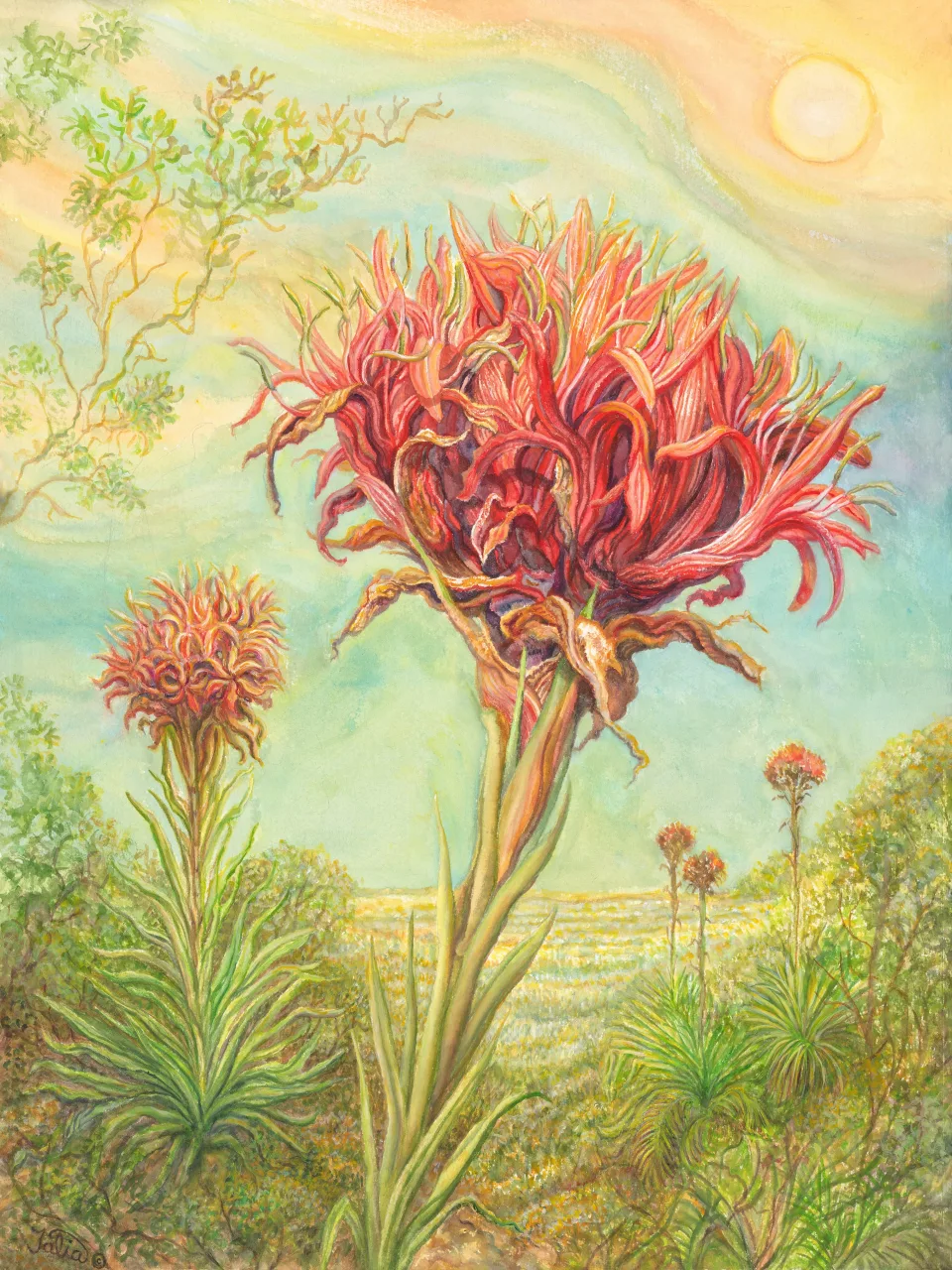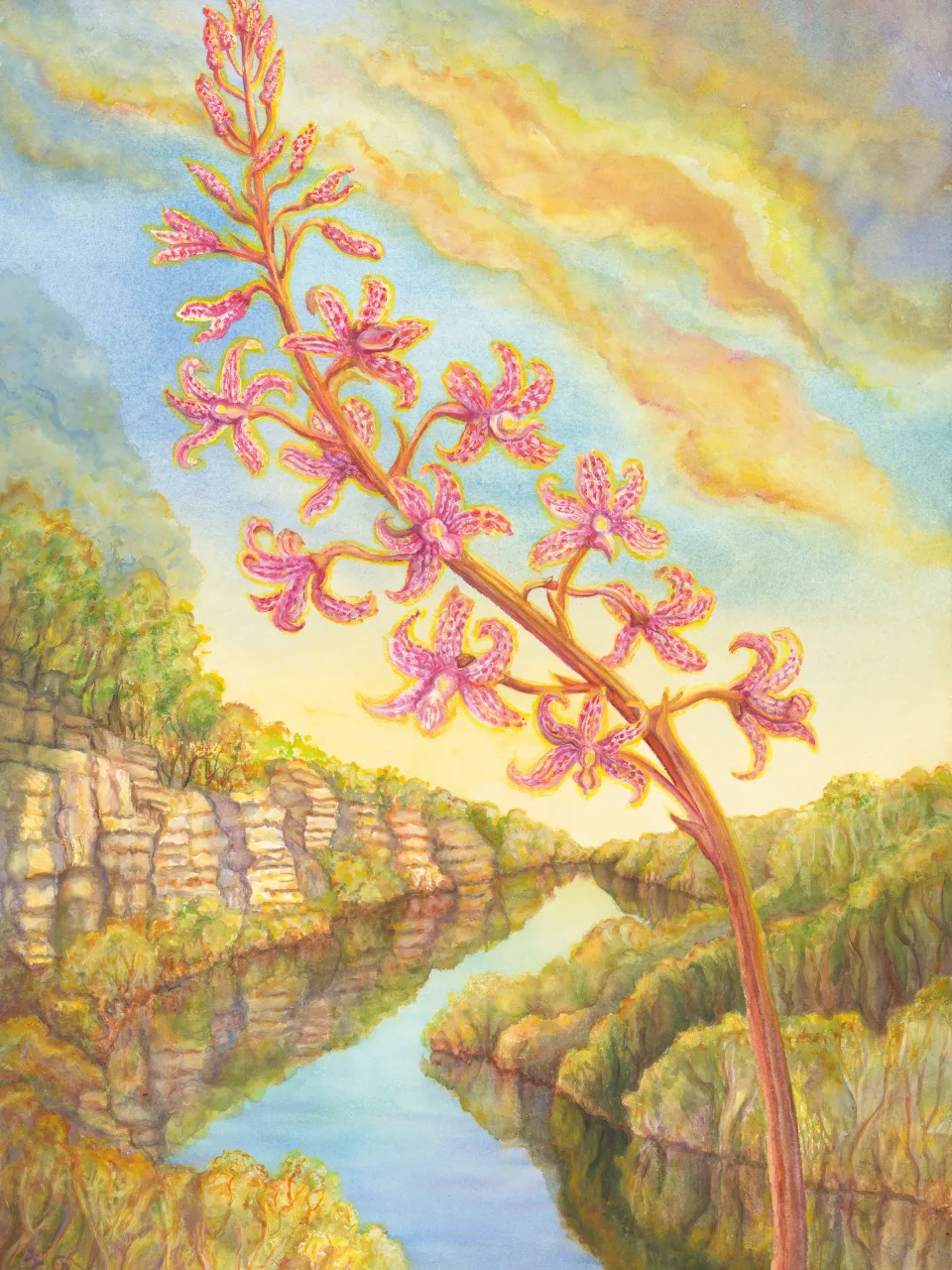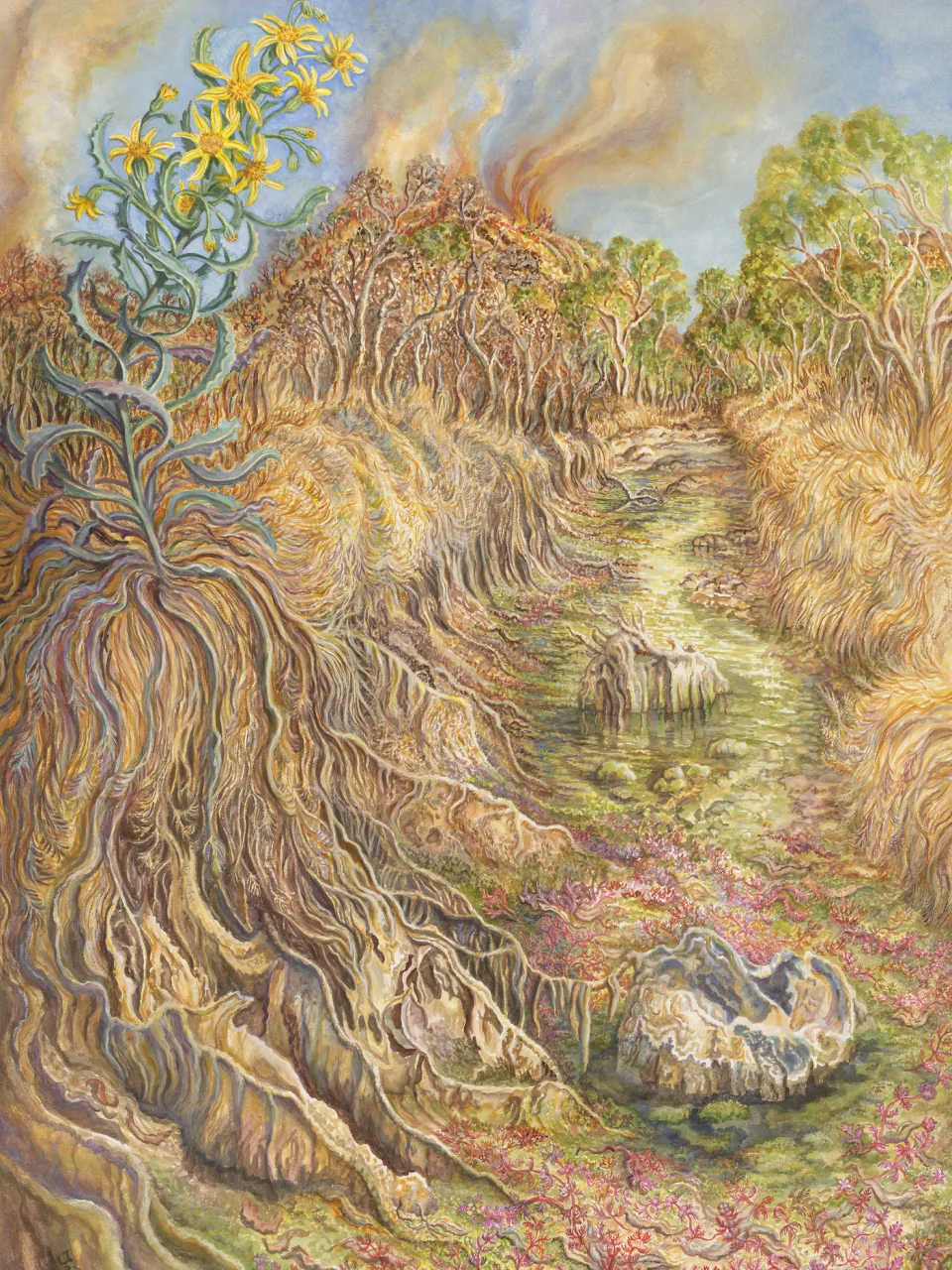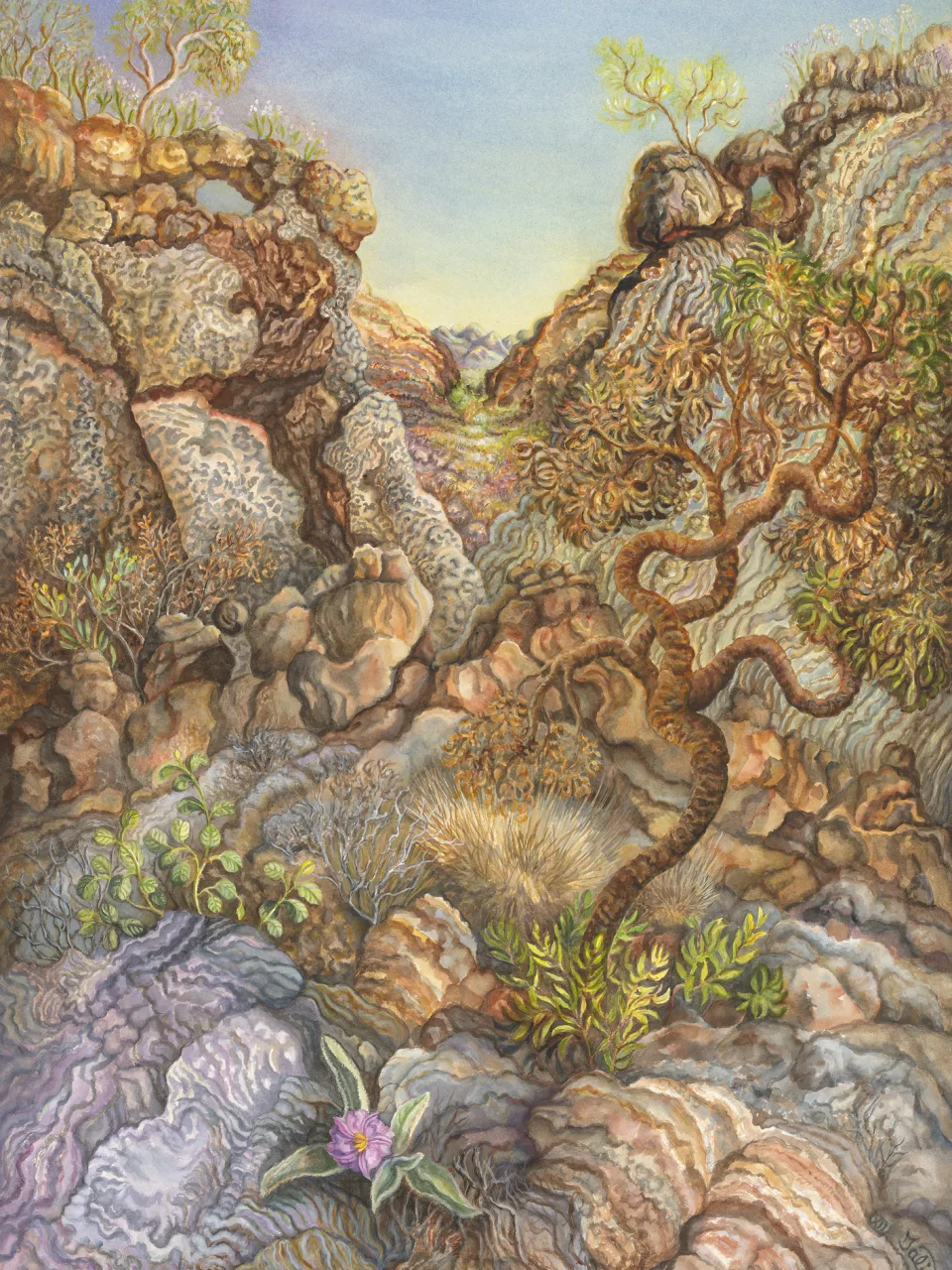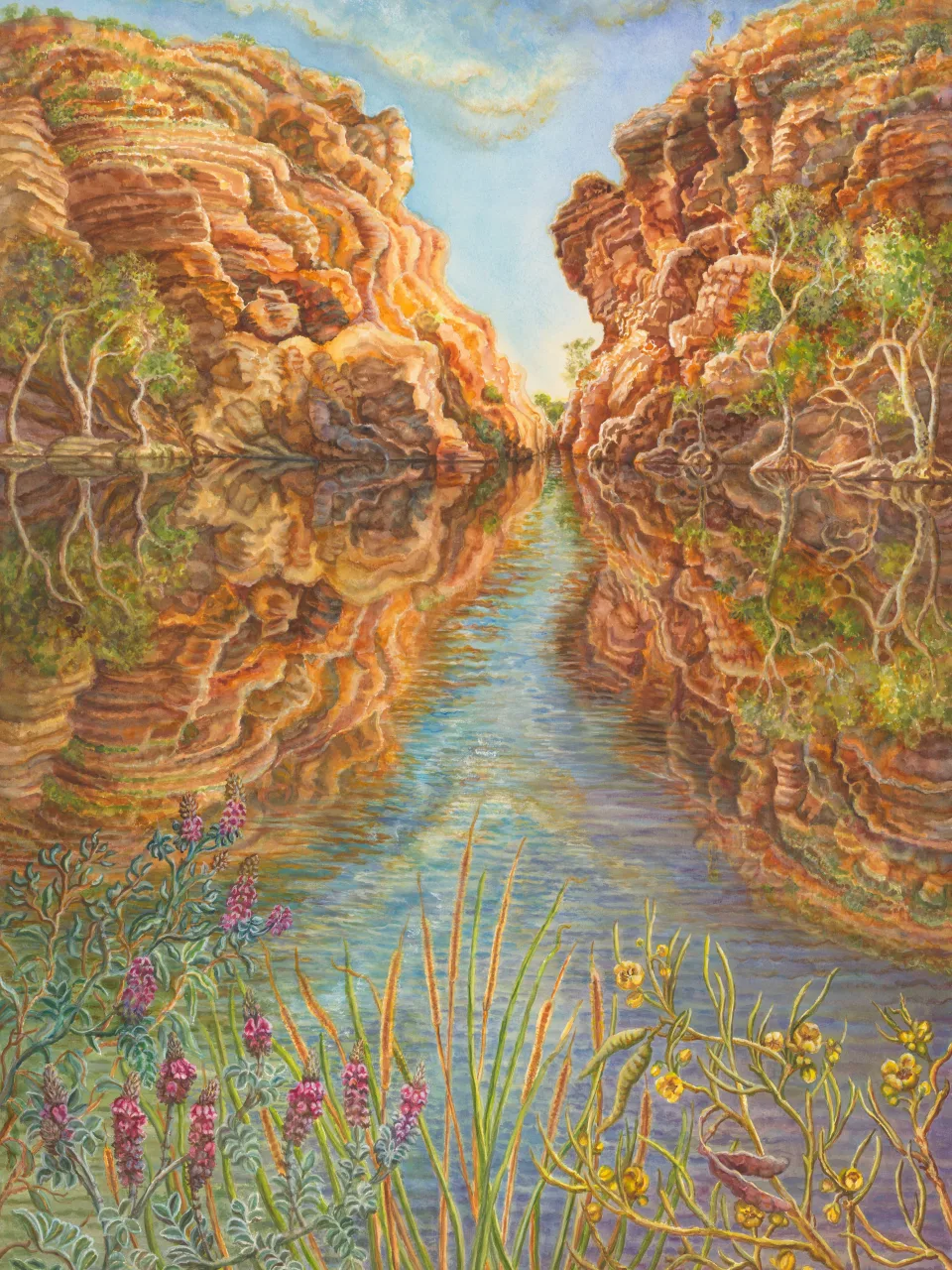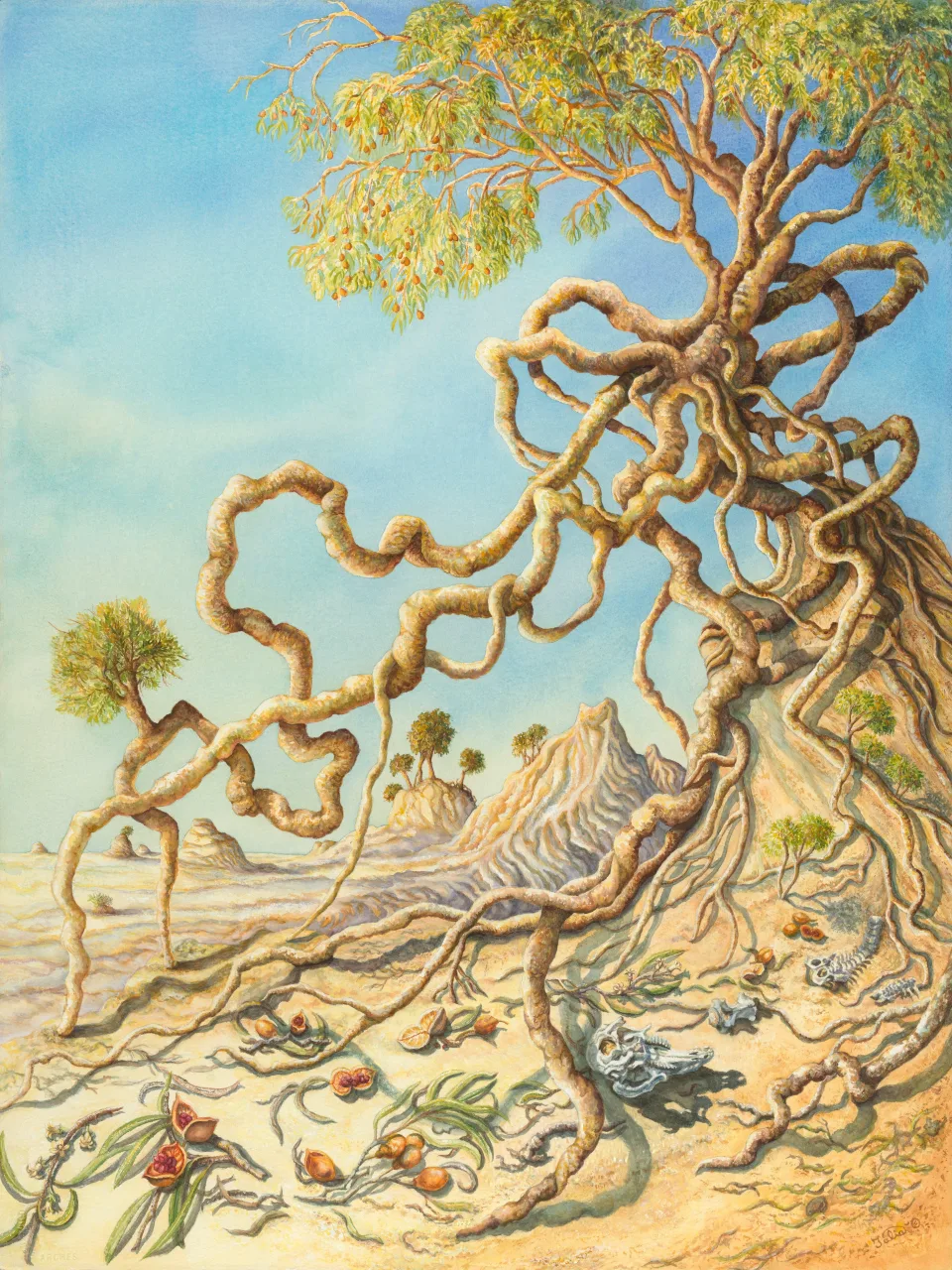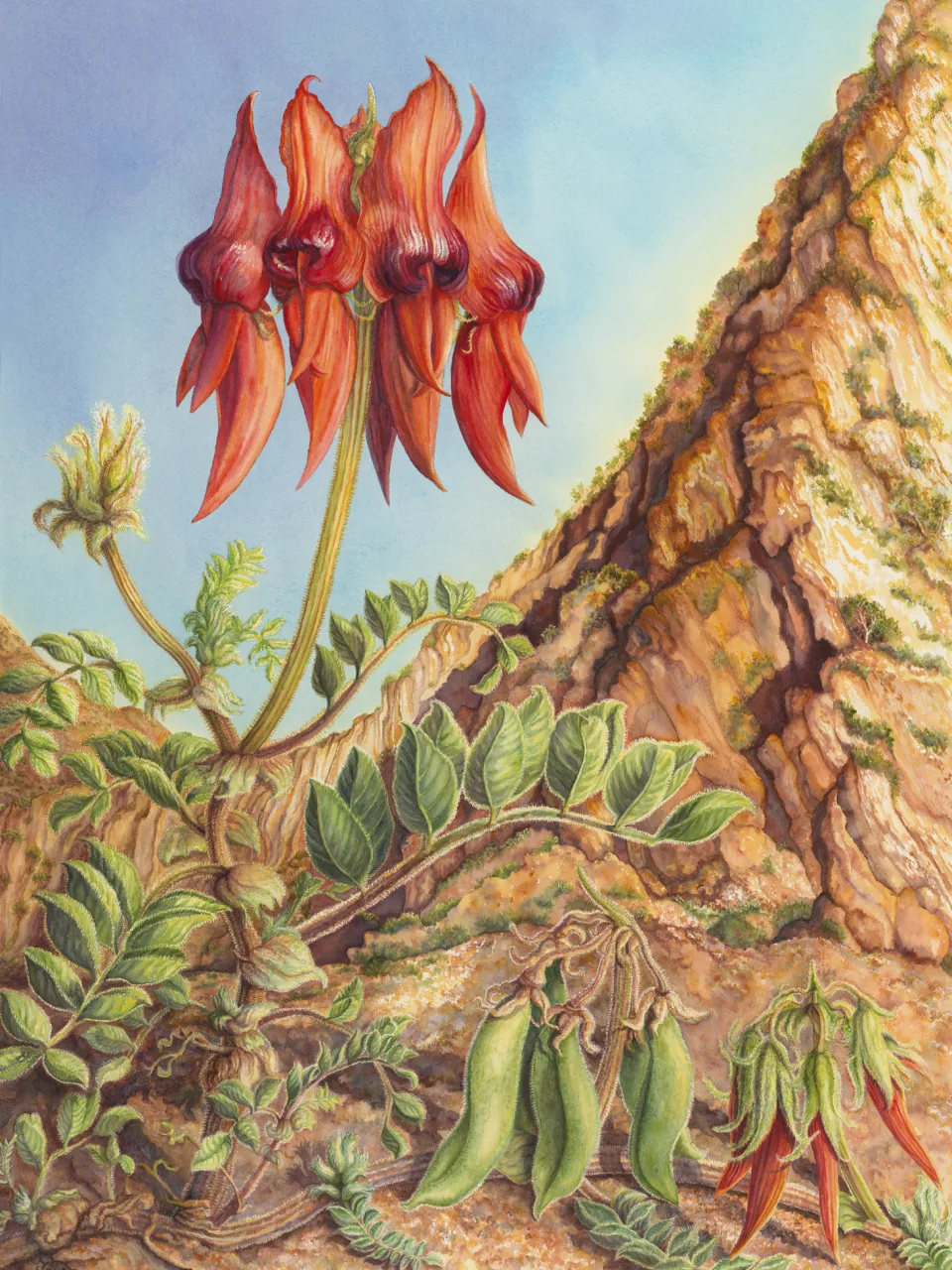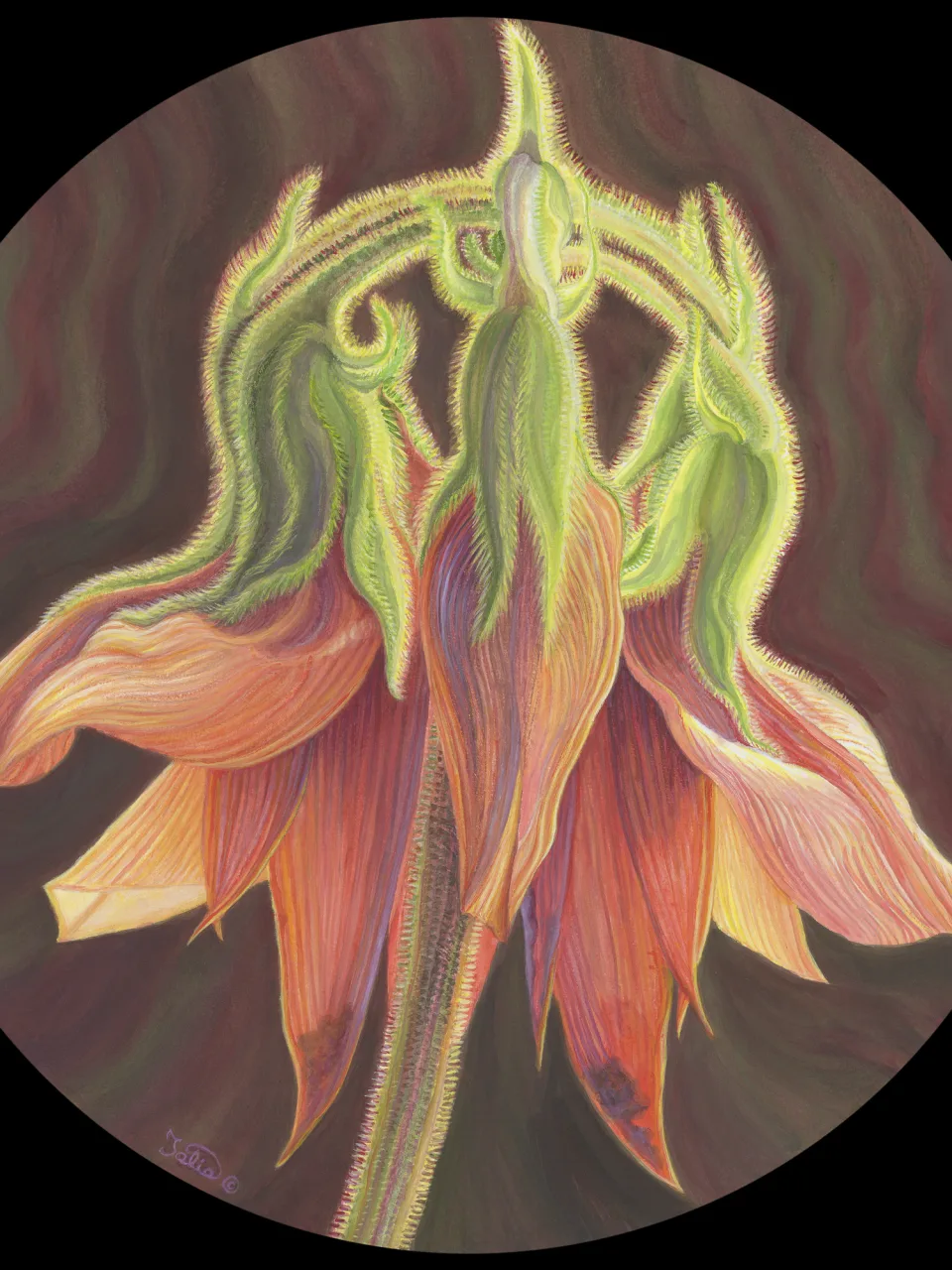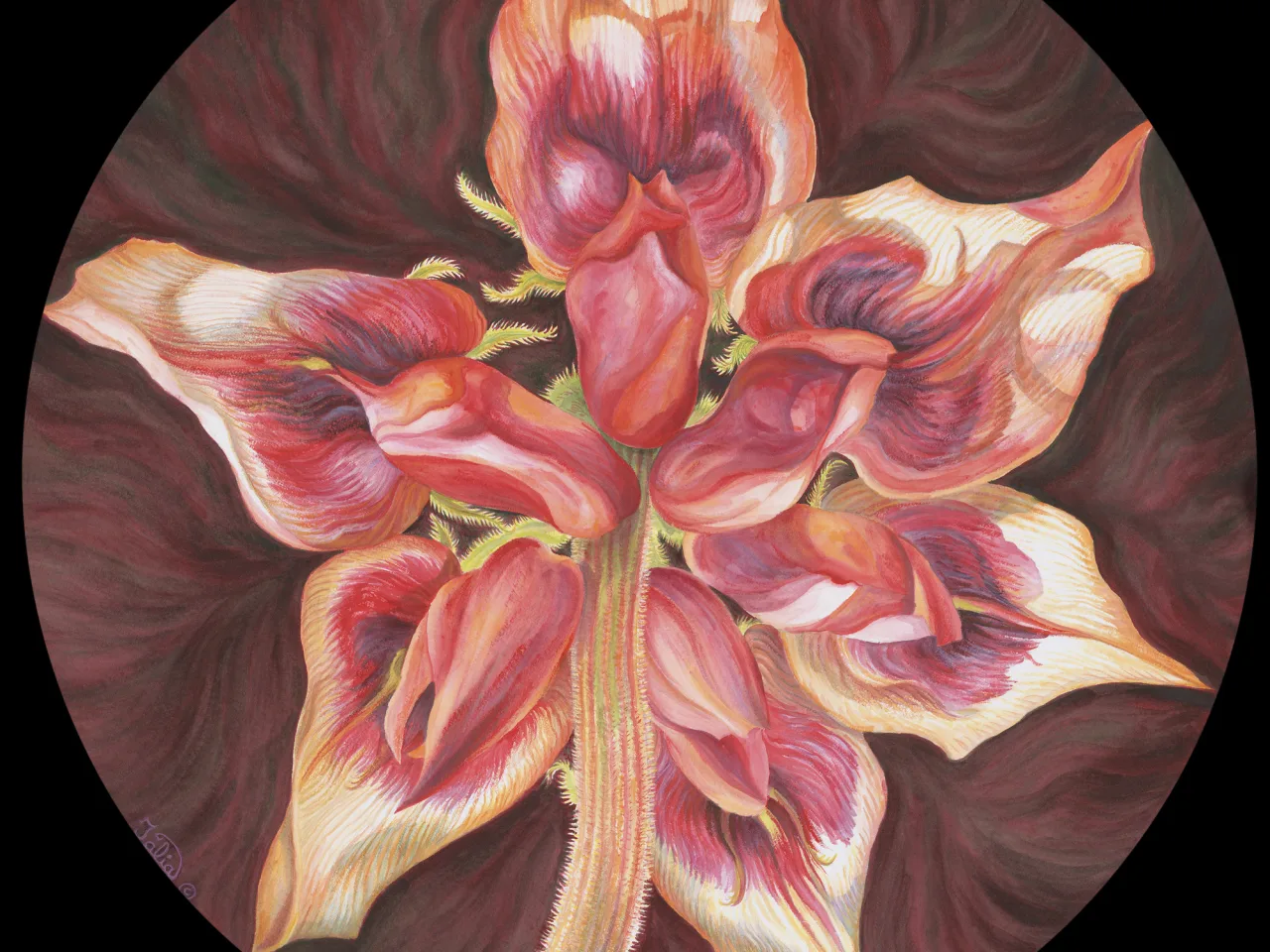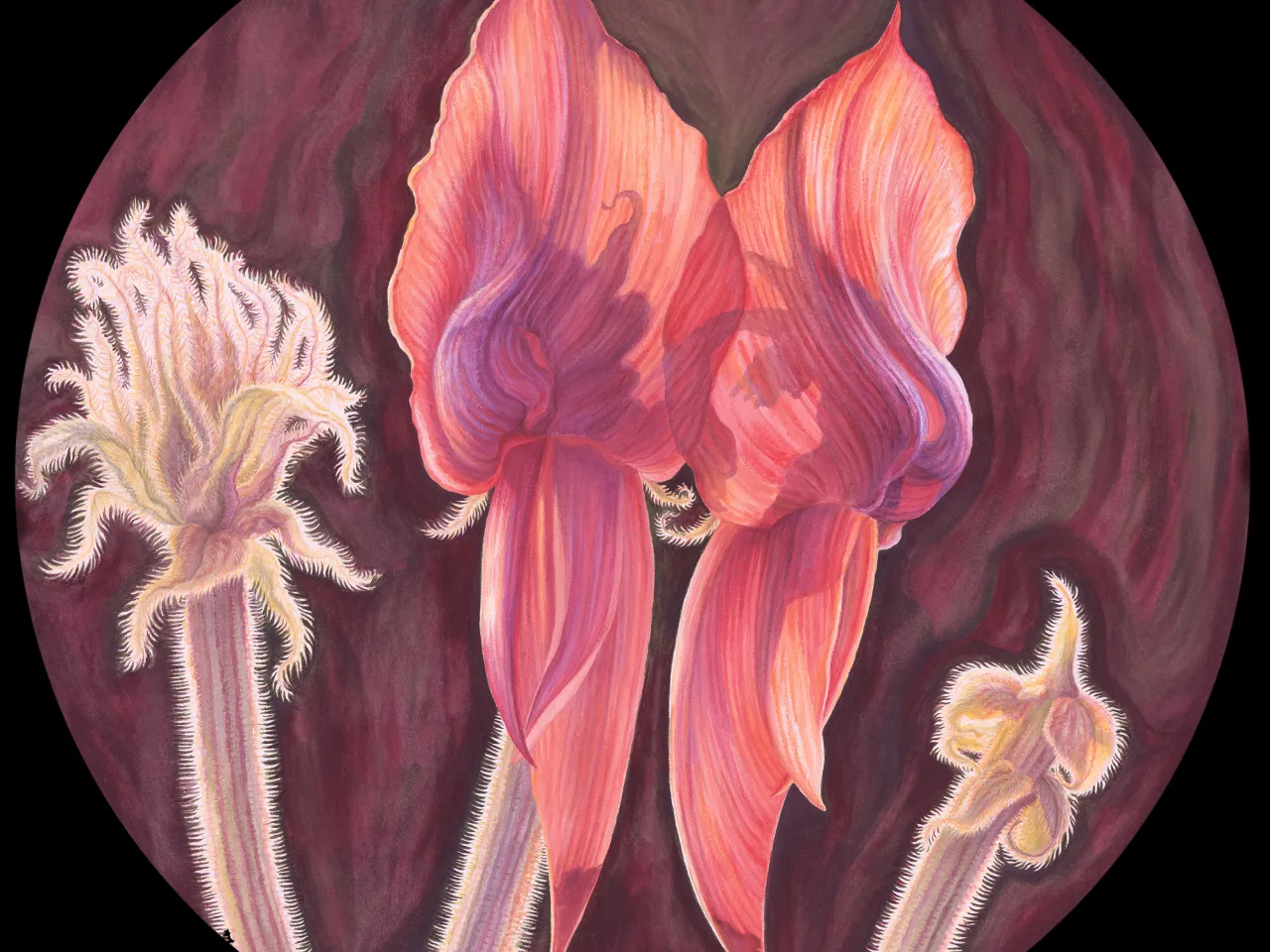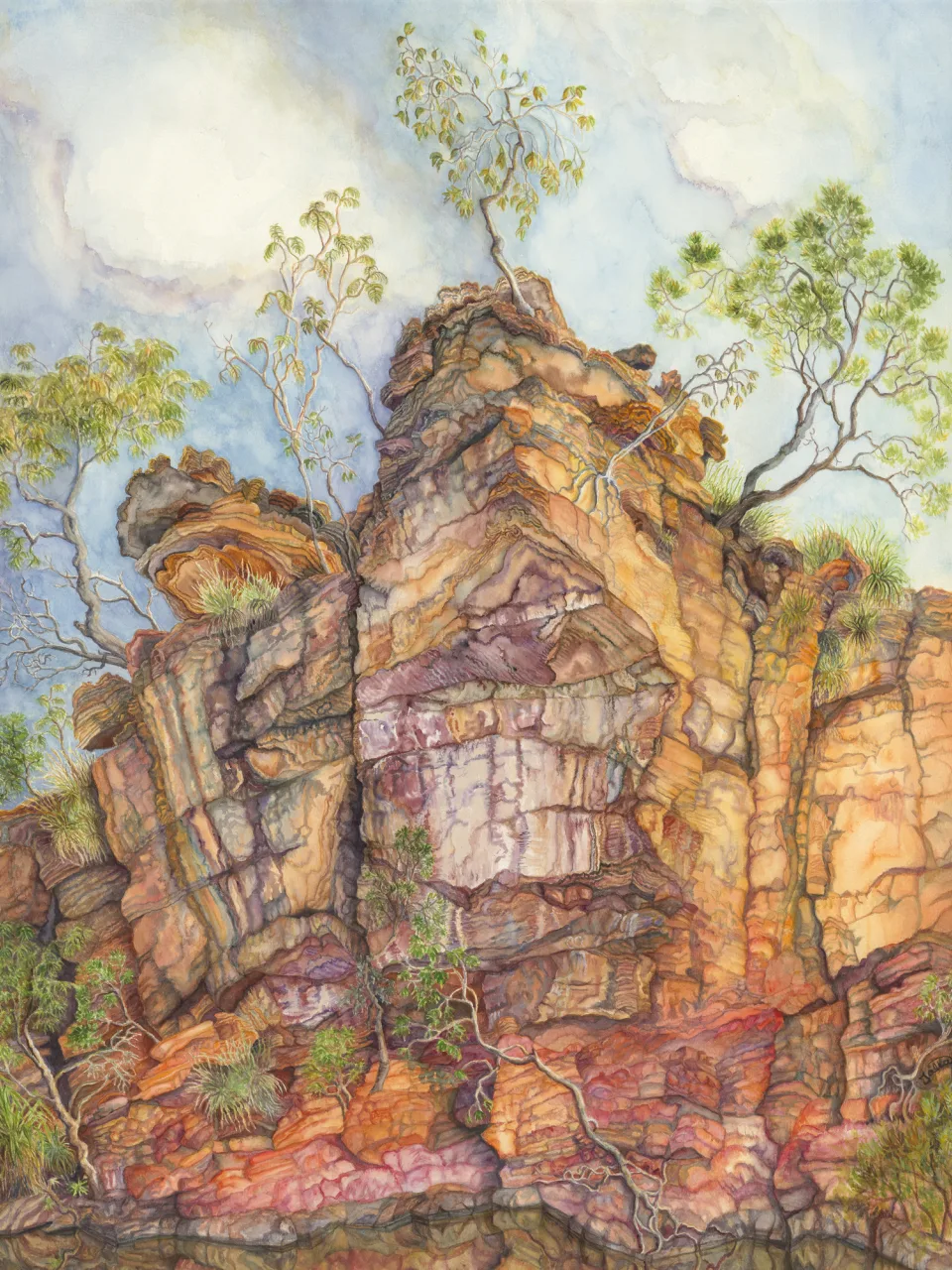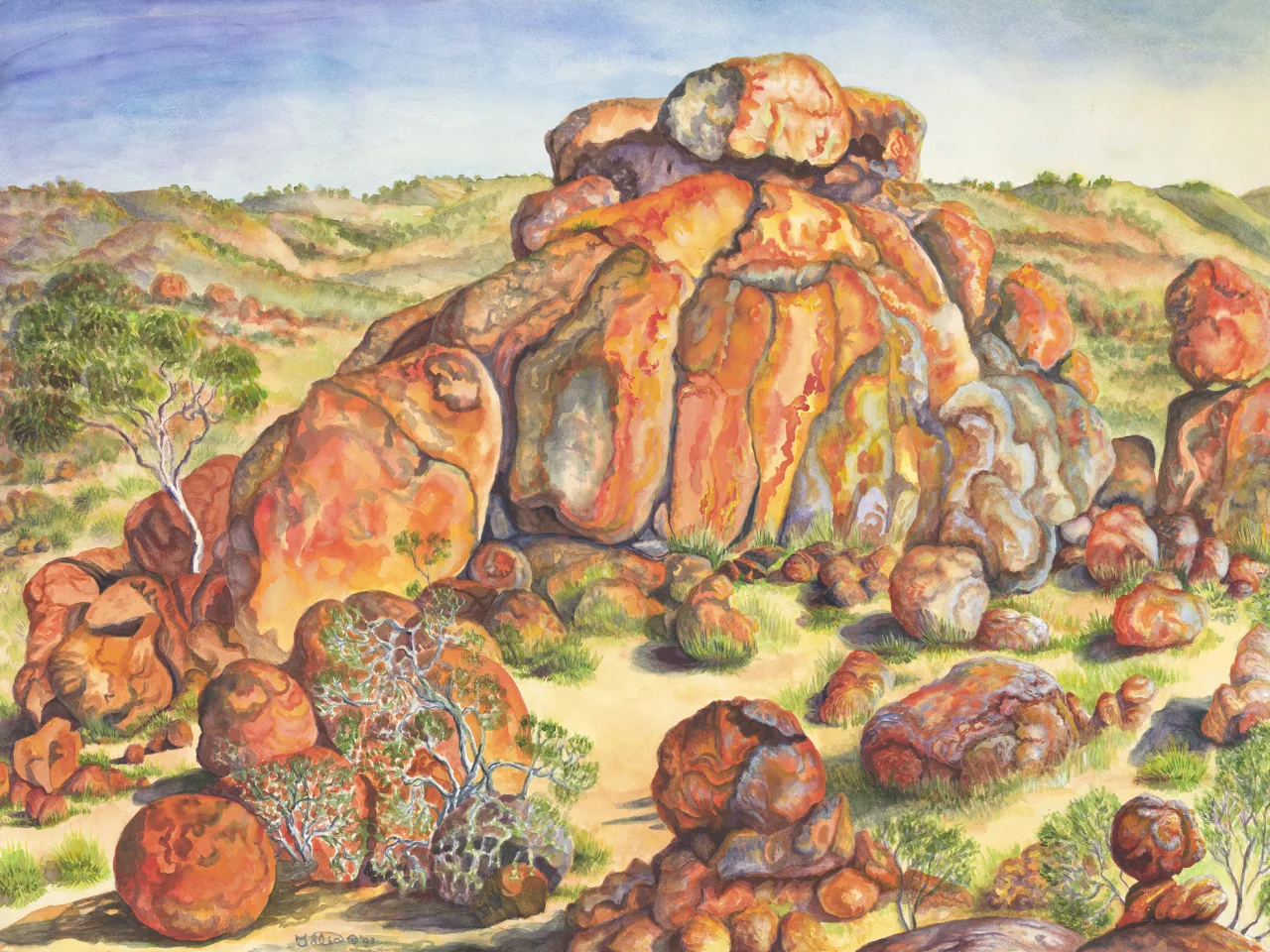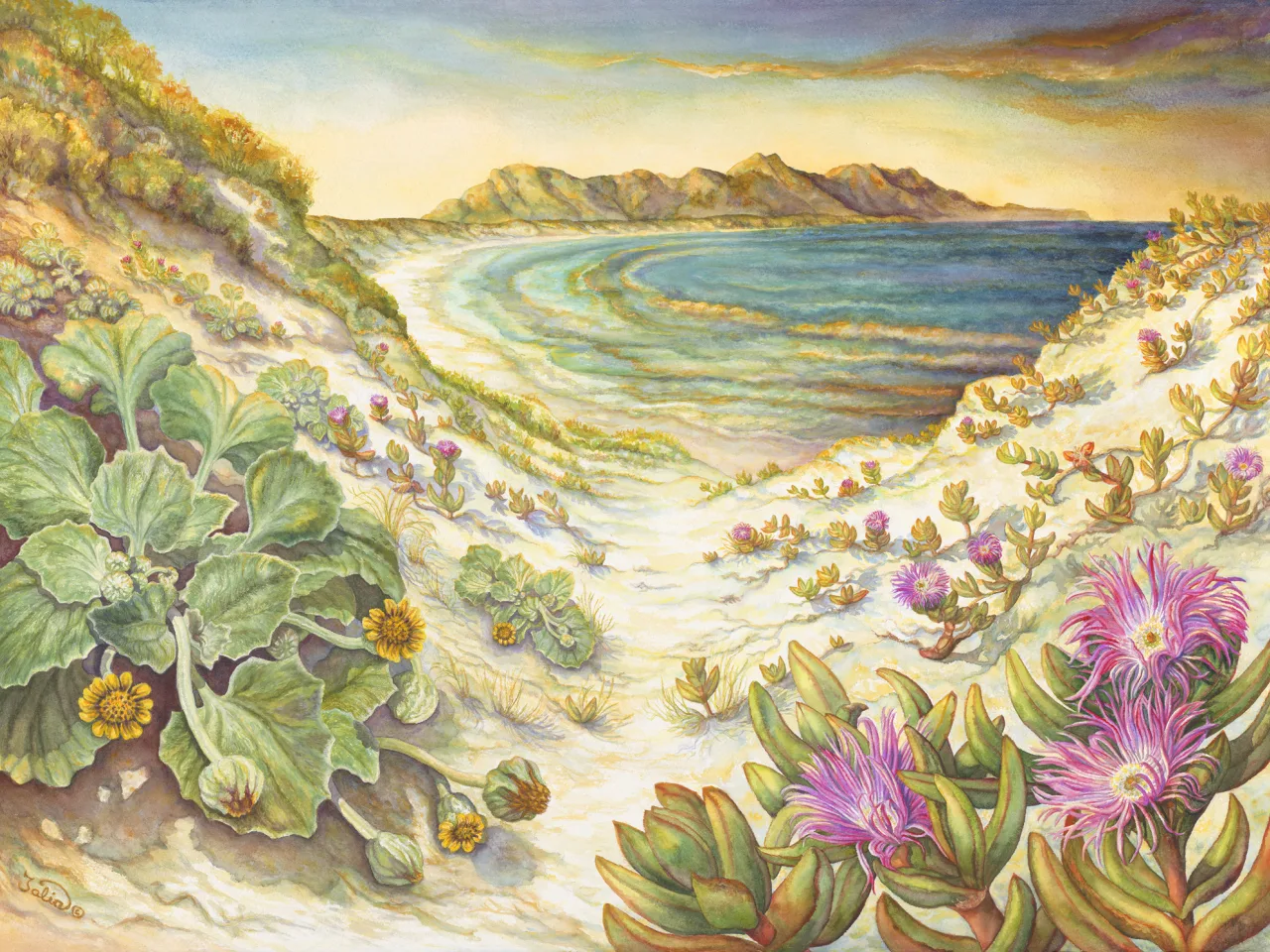Artwork 5 After the Rains—on top of Uluru/Ayers Rock (Protista and Mulga)
Section 5
Extremophiles—Microorganisms that Thrive Under Extreme Conditions
Uluru-Kata Tjuta National Park, Northern Territory, Northern Territory
- 1. Acacia ayersiana (Ayers Rock mulga)
Artwork 5
Buy a print
Limited edition giclee archival quality print on 310 gsm Ilford cotton rag (from an original work in acrylic on canvas, 112 cm high x 84 cm wide)
from the artist
We witnessed a rare storm over Uluru / Ayers Rock in Central Australia while camping near “the Rock”. Water sparkled and fell over the steep sides of this spectacular ochre-coloured sandstone monolith. The steep sides of this inselberg—island mountain—are nearly vertical, and made of arkose—sandstone with a lot of feldspar, and enough iron oxide to give it this wonderful reddish colour on the surface. Sediments were laid down in the Cambrian seas which covered much of Central Australia 550 mya, and the area was compressed and folded during the Devonian, between about 400 and 300 mya. However, much of its dramatic appearance is due to erosion and weathering during the last 60–70 million years.
A day later, when the bare slopes of Uluru / Ayers Rock had dried in the brilliant Sun, we climbed to the top. For those experienced in climbing, it is a steep but relatively easy, steady upwards climb, with views becoming increasingly more specatacular as one progresses. When we reached the top, we were surprised to find a “bonsai garden” of small spinifex clumps and dramatically stunted mulga trees (identified later as, appropriately, Acacia ayersiana, or Ayers Rock mulga) (Urban, 1990, pp. 82–83). The small flattened summit area provided enough moisture and nutrition to enable an arid zone “garden” to survive—if not exactly thrive!
While admiring the view over the spinifex plains to Kata Tjuta (the Olgas), we made another fascinating discovery. Rock pools still contained water collected during the rainstorm, and not unexpectedly, darkened mosses, lichens, small twigs, and leaf debris. However, one pool, amazingly, also held a bubbling, expanding cluster of brilliant yellow-green blobs of various amorphous shapes and sizes, connected by “fingers”. It was difficult to identify this fascinating organism, however several sources suggested the most likely possibility—a “slime mould” (Myxomycota). This simple and ancient “extremophile” (microorganism that thrives under extreme environmental conditions) absorbs decaying plant and animal material, moving along like an amoeba, and reaching out with flowing foot-like projections.
As visitors to Uluru / Ayers Rock can no longer climb to the summit (banned in 2019, mainly due to risk of injury or death to inexperienced climbers), I hope this painting will help visitors visualise the summit area and view of Kata Tjuta in the distance, with spectacular cirrus clouds against the blue sky. We had lovely weather and beautiful views and are grateful for having had that unique experience.

